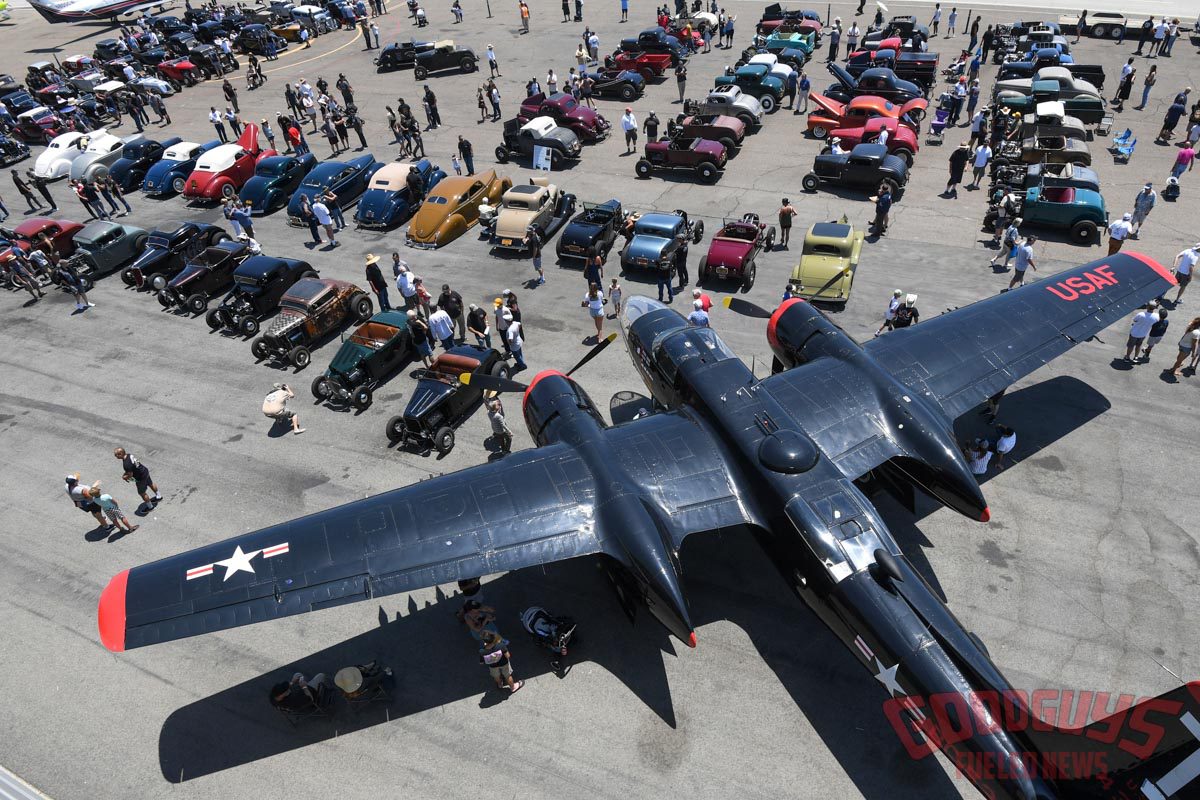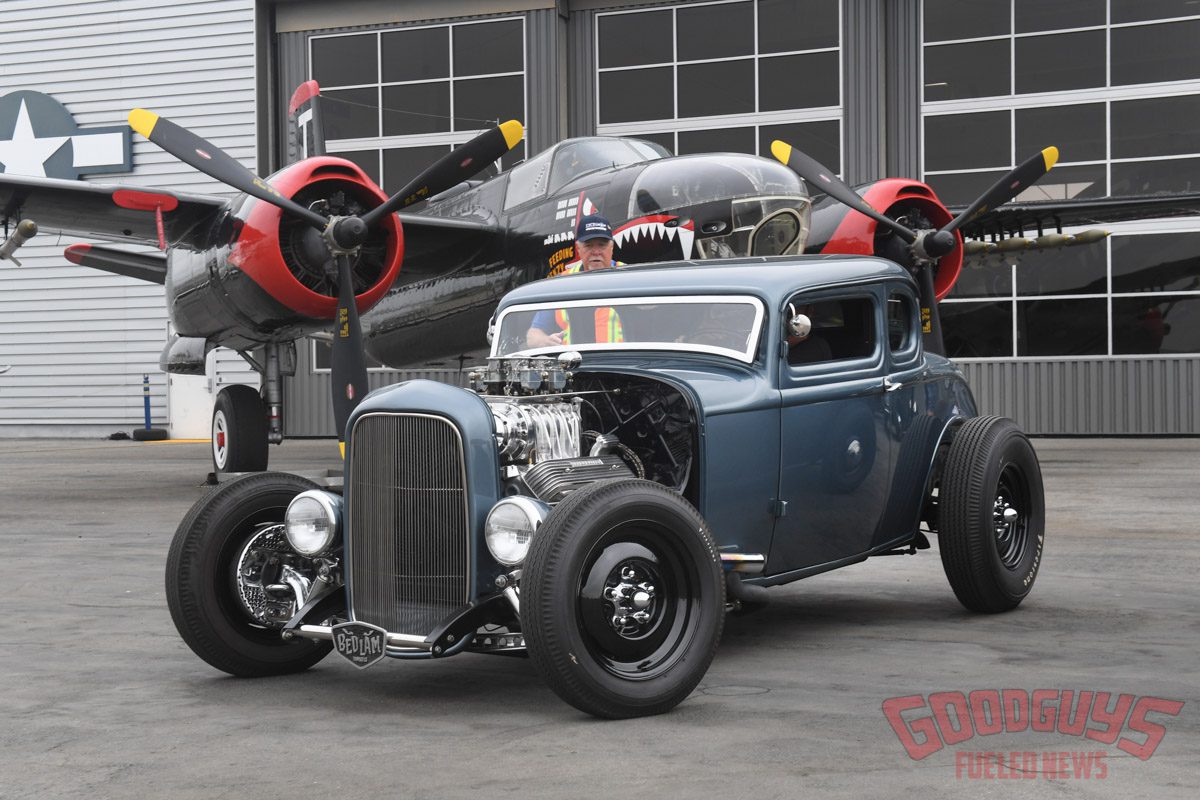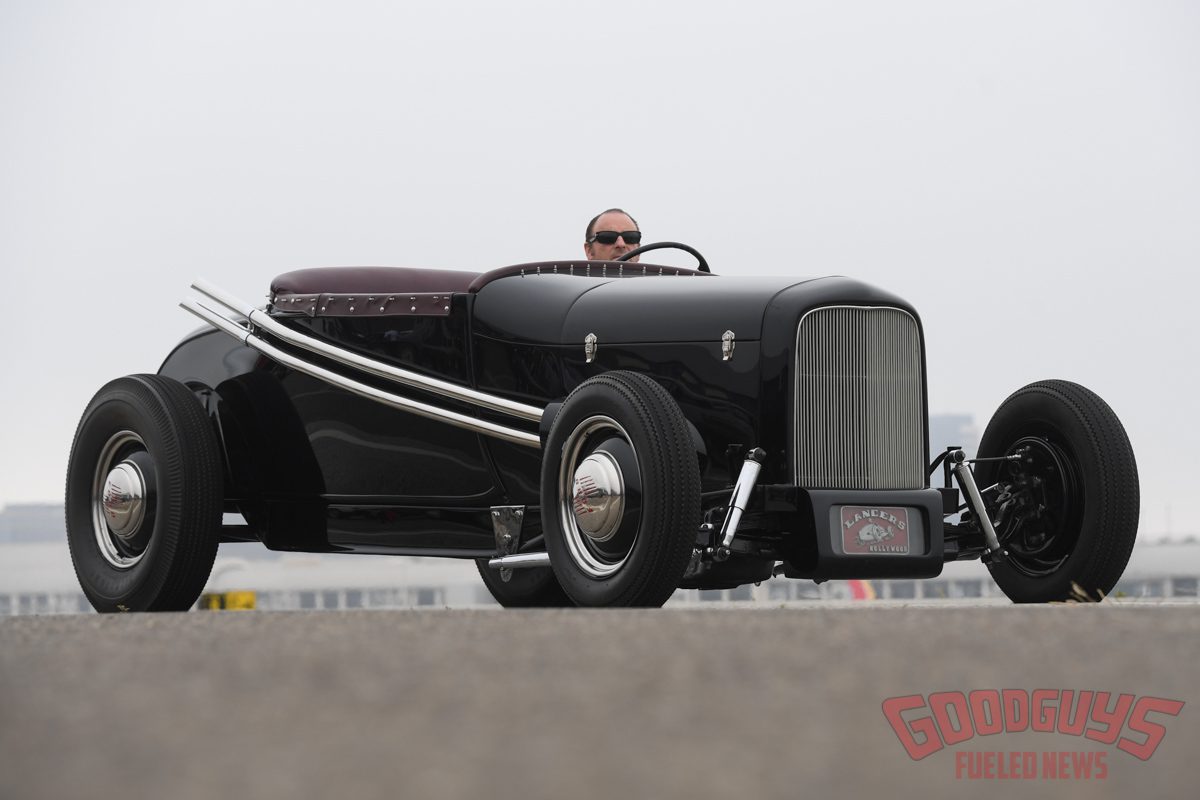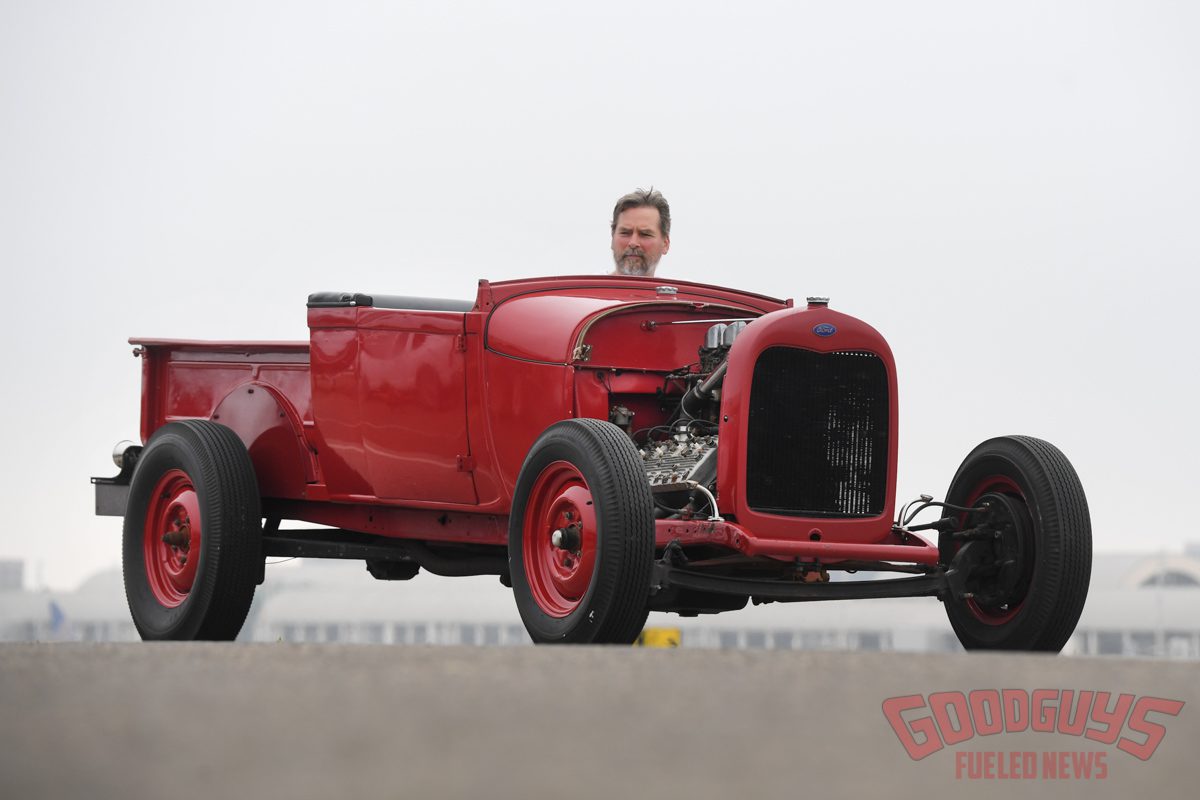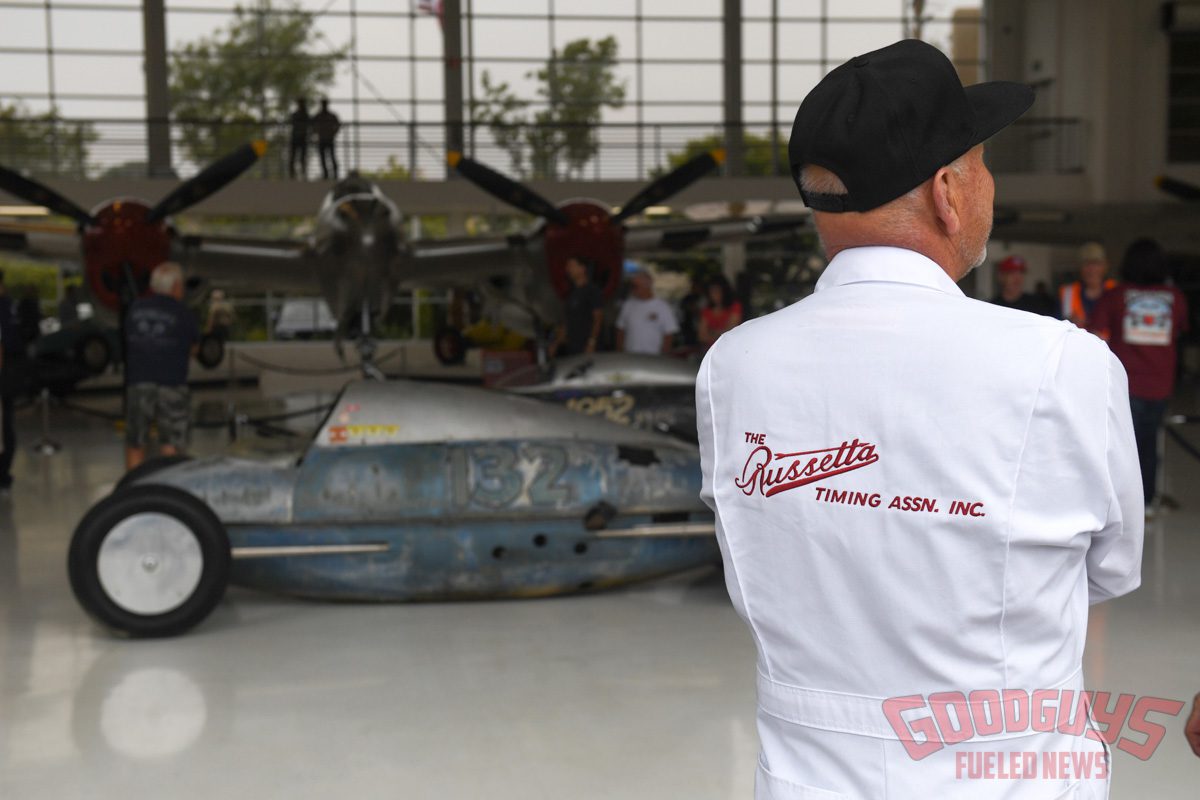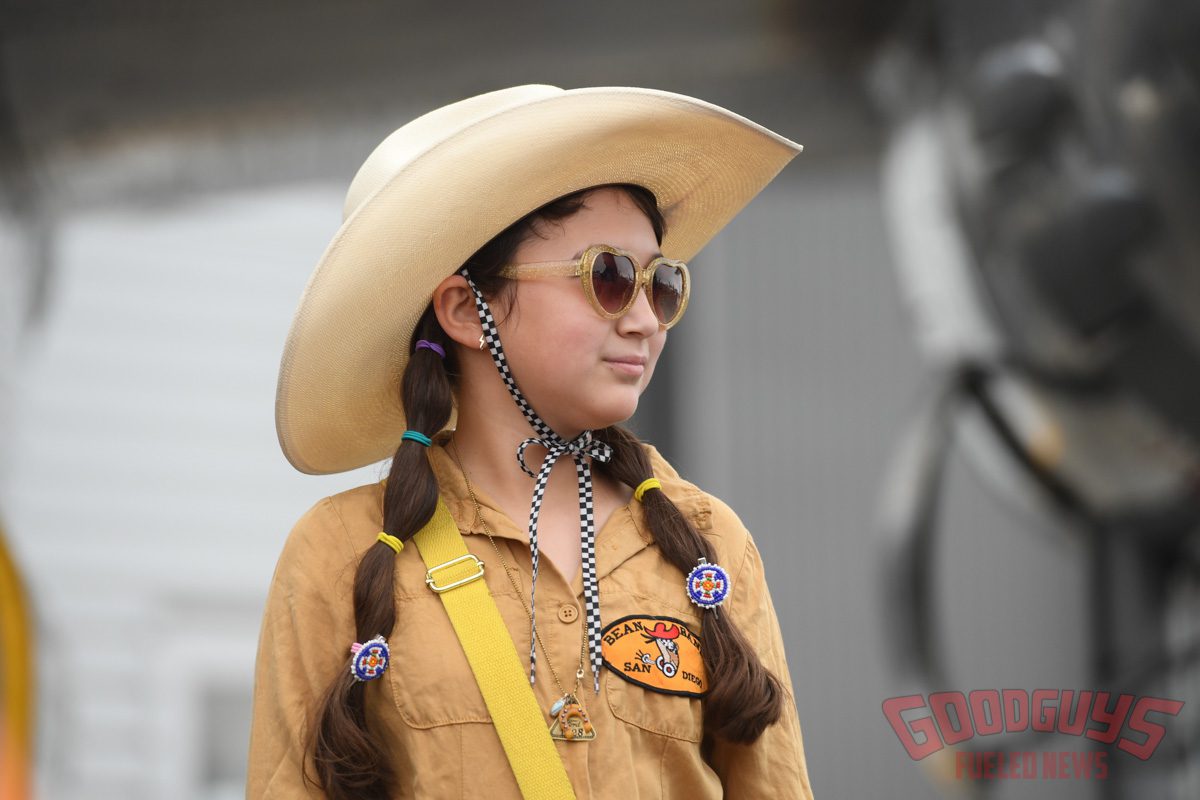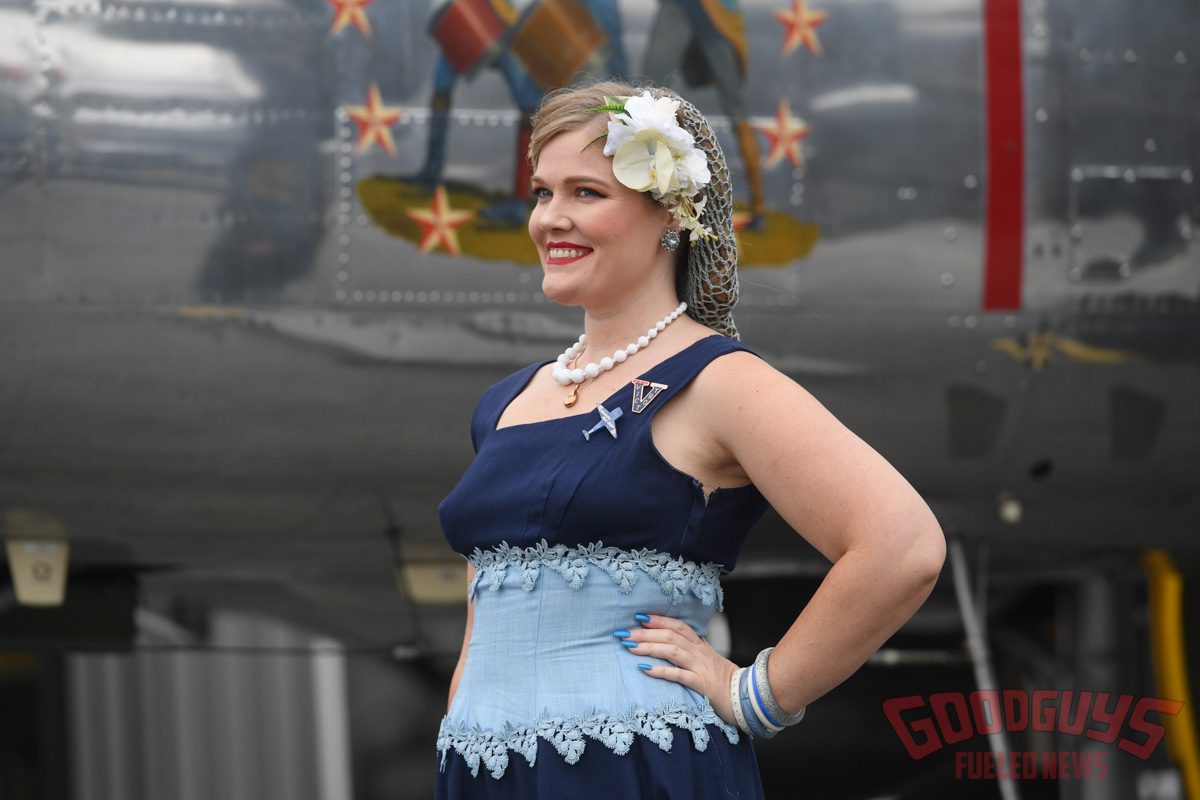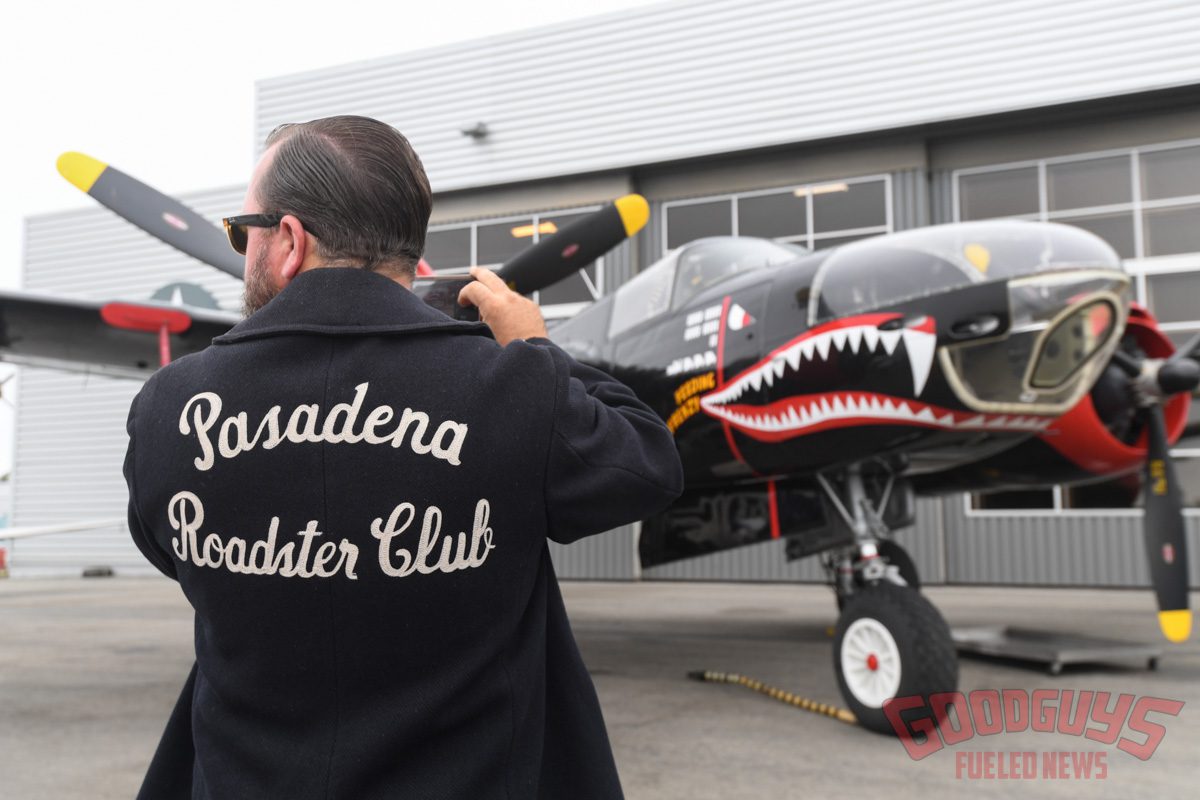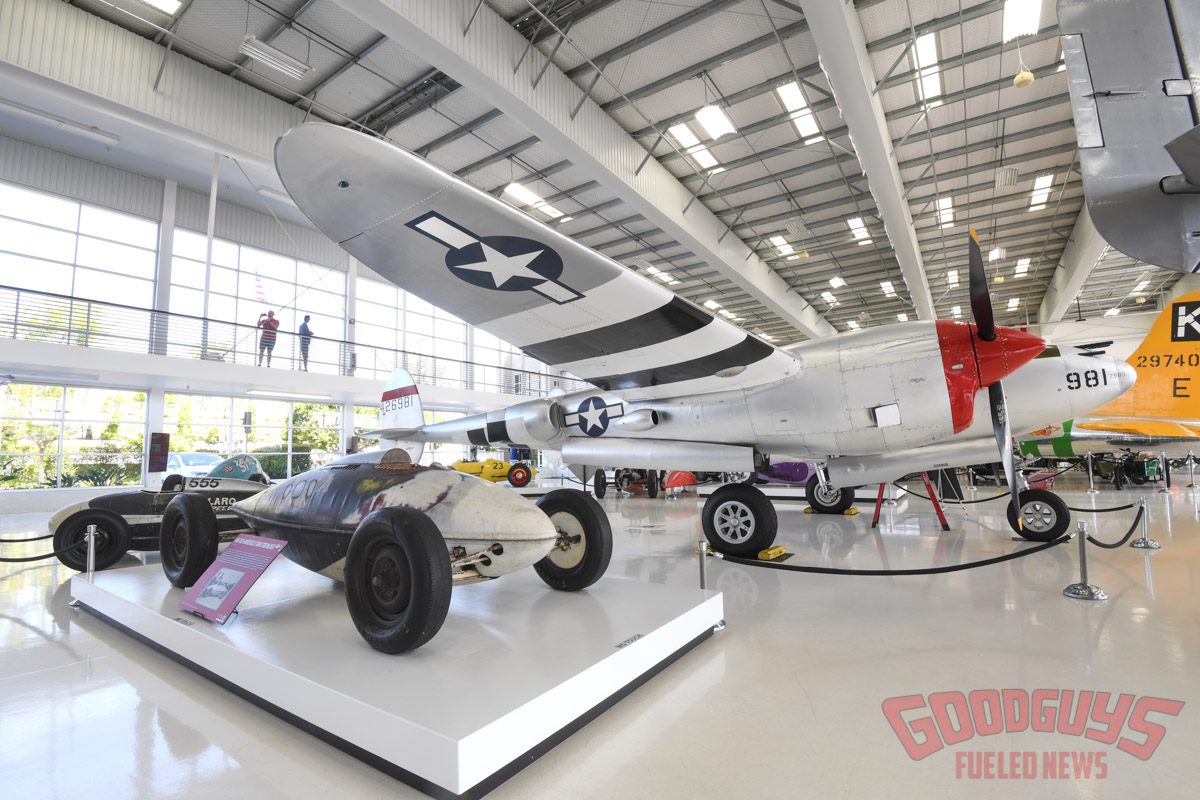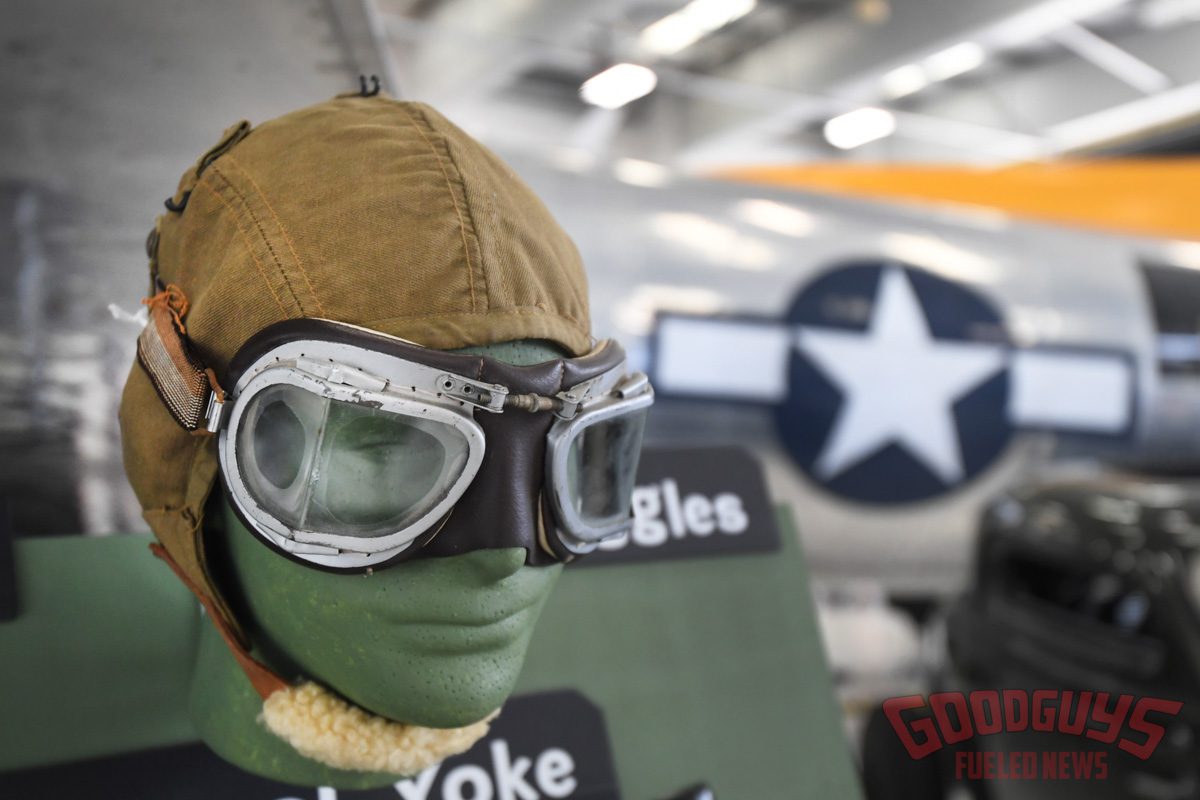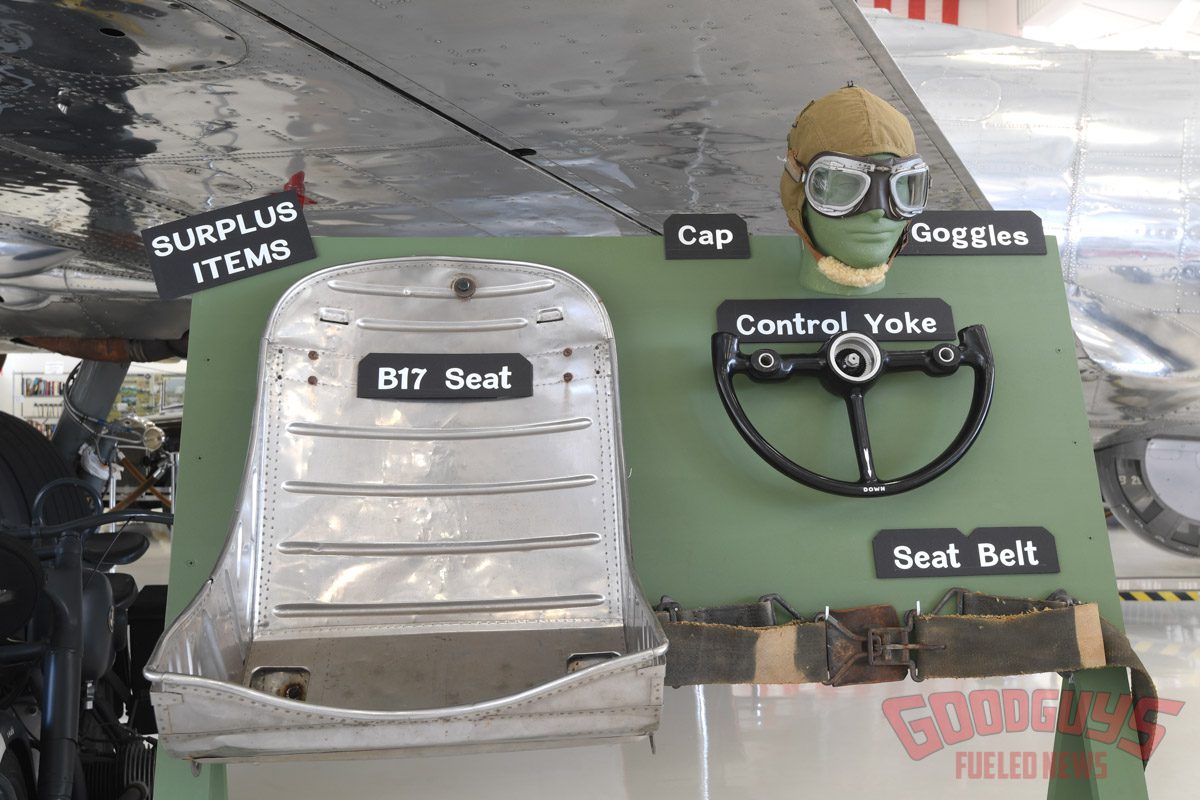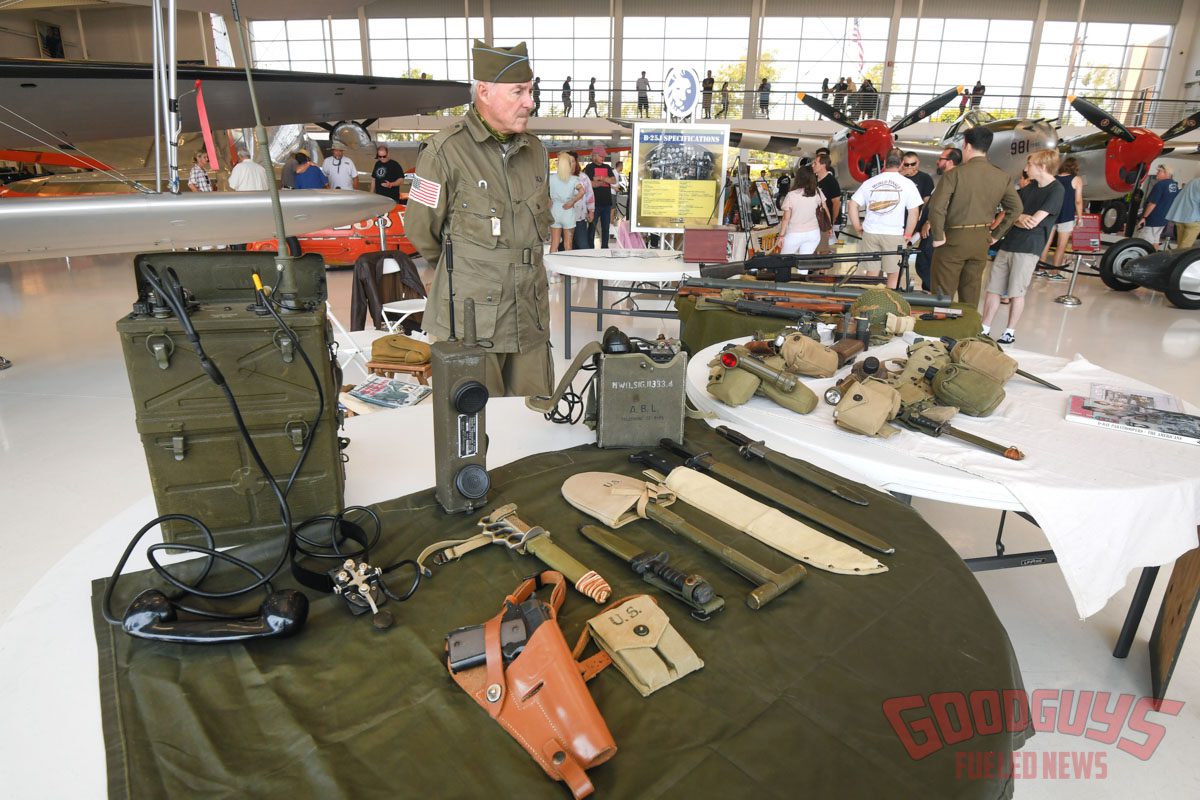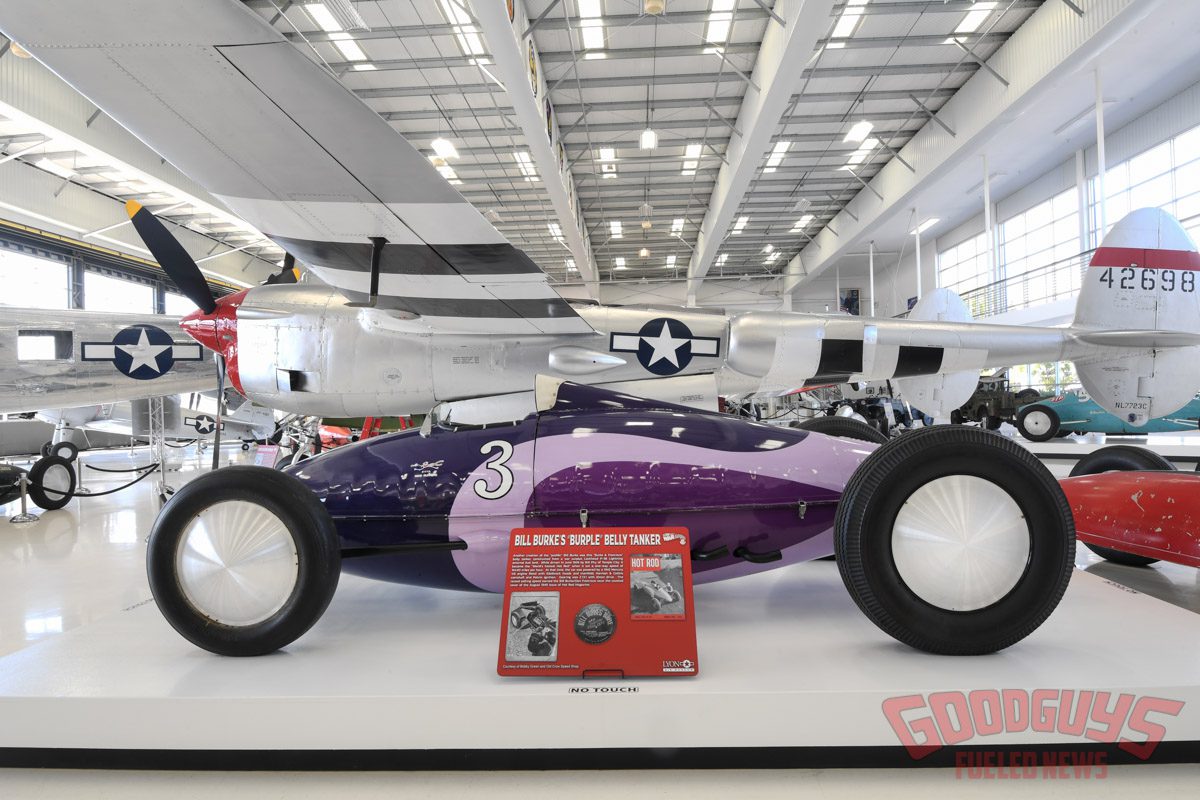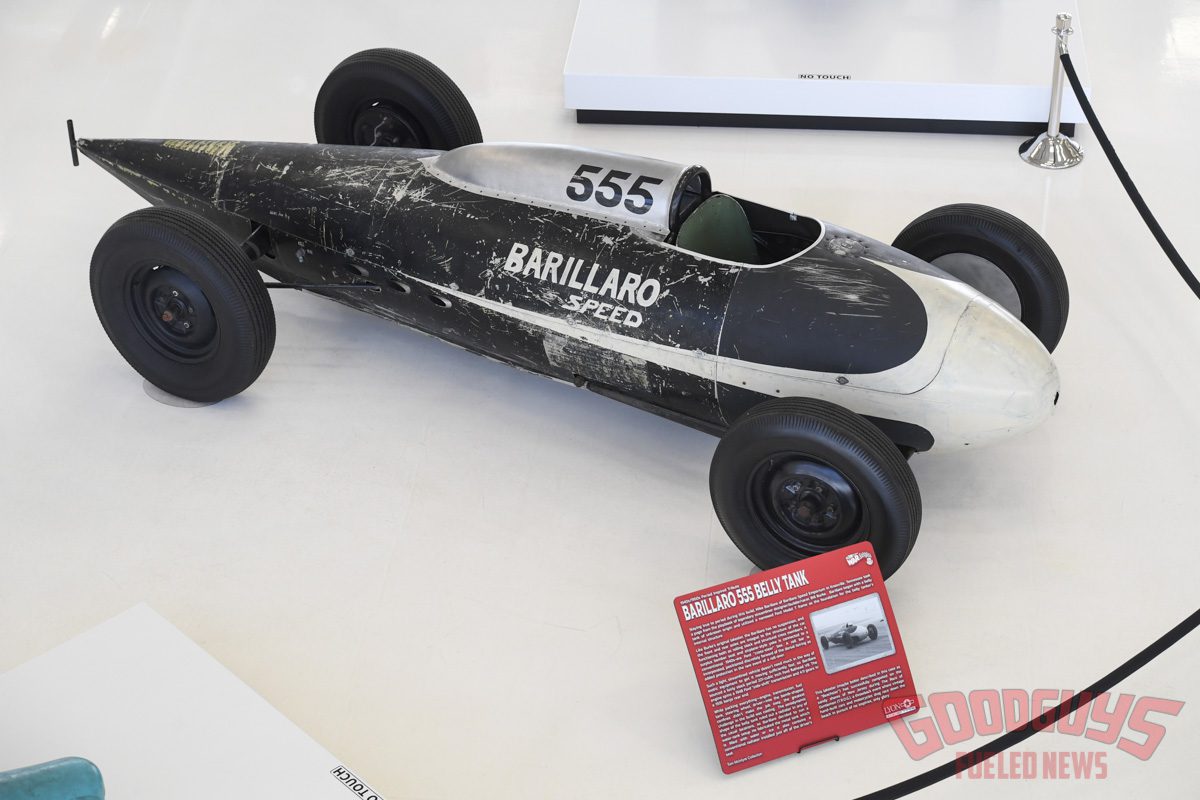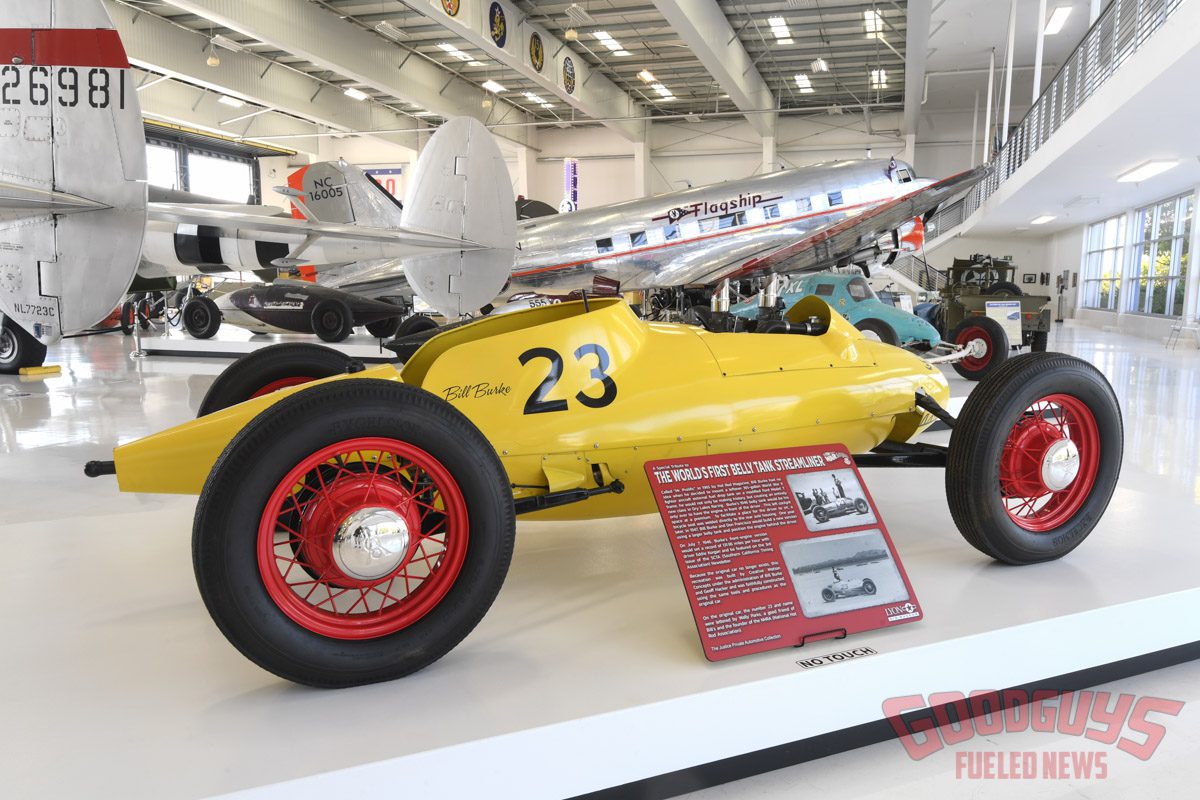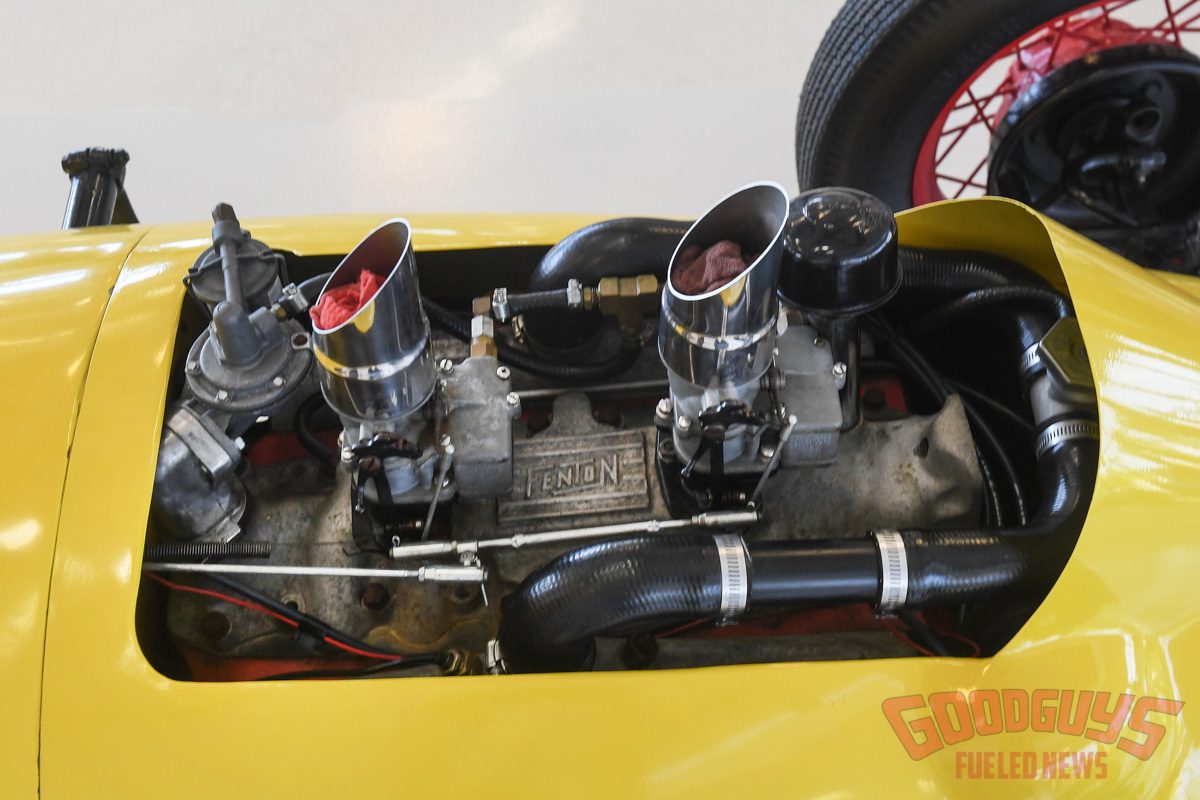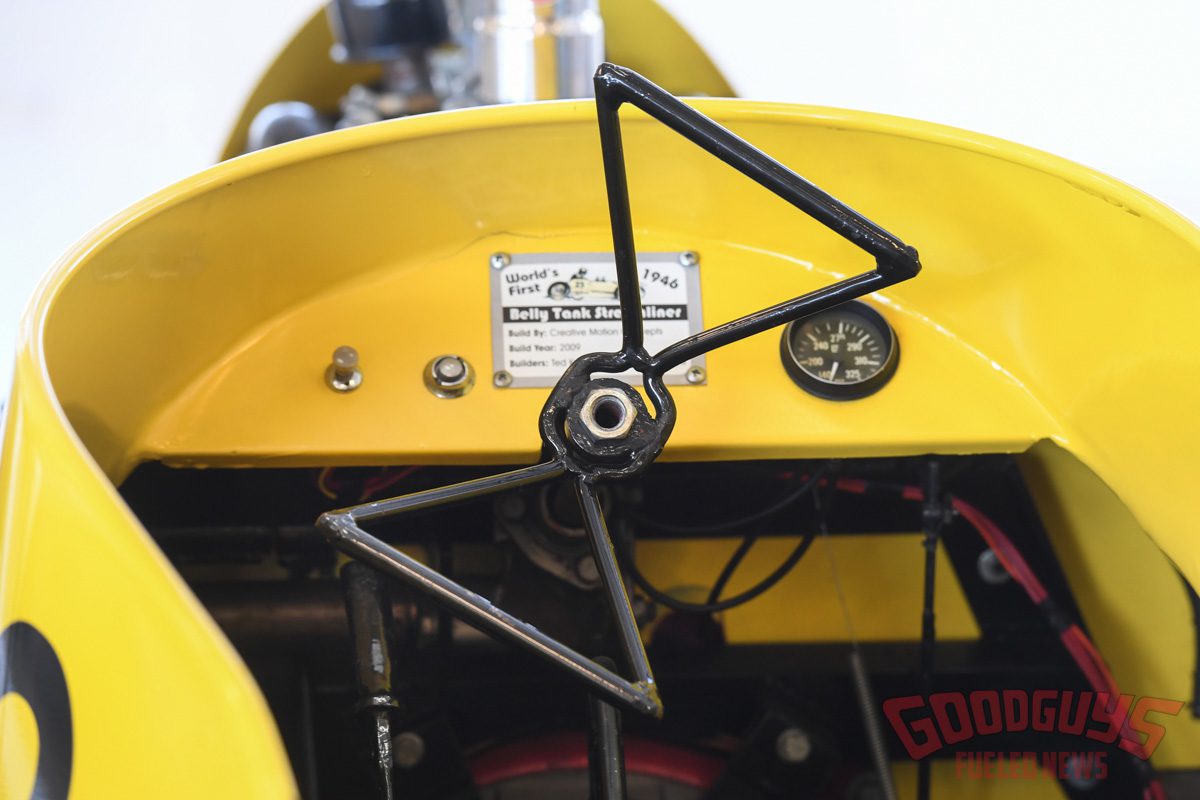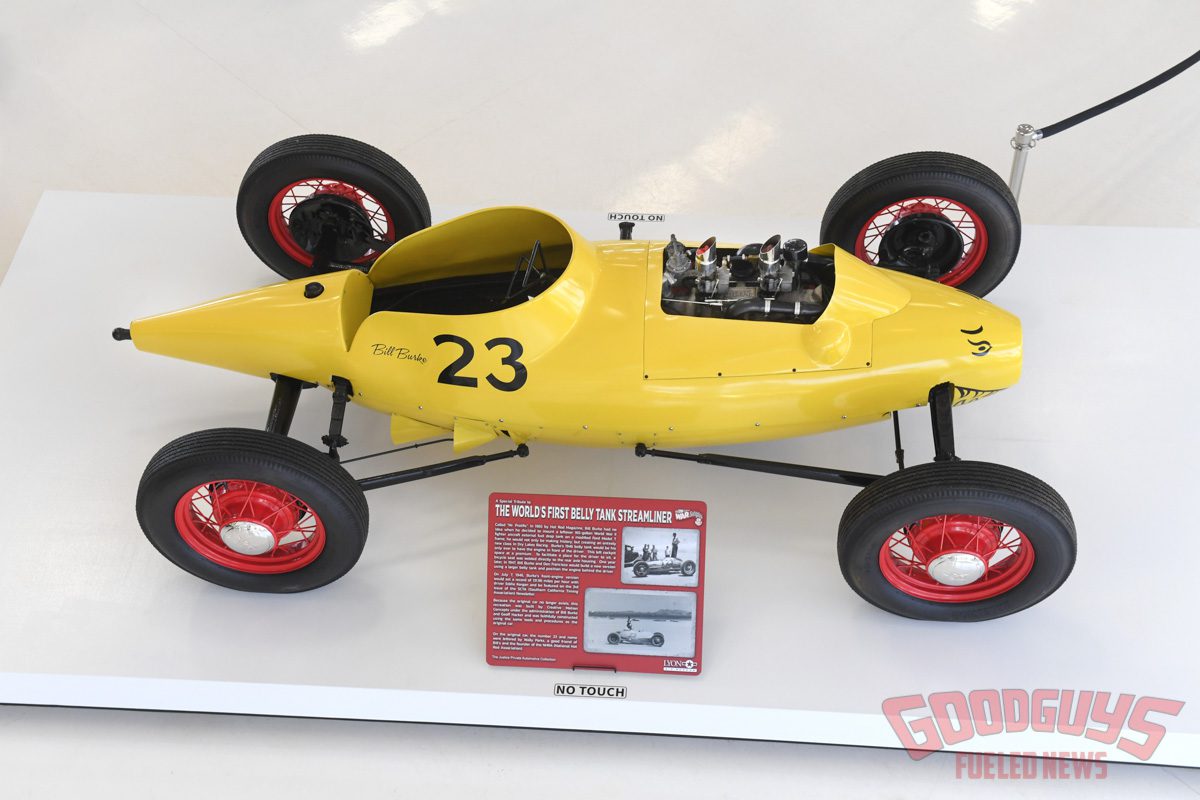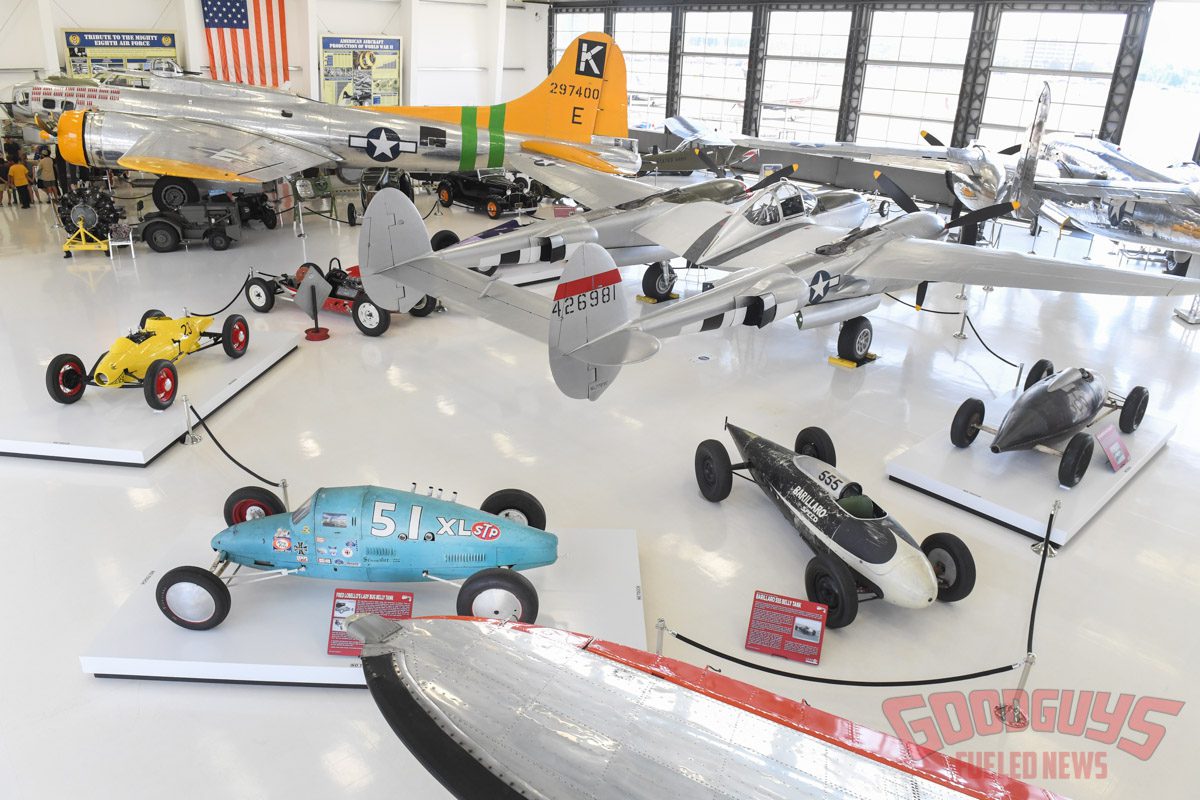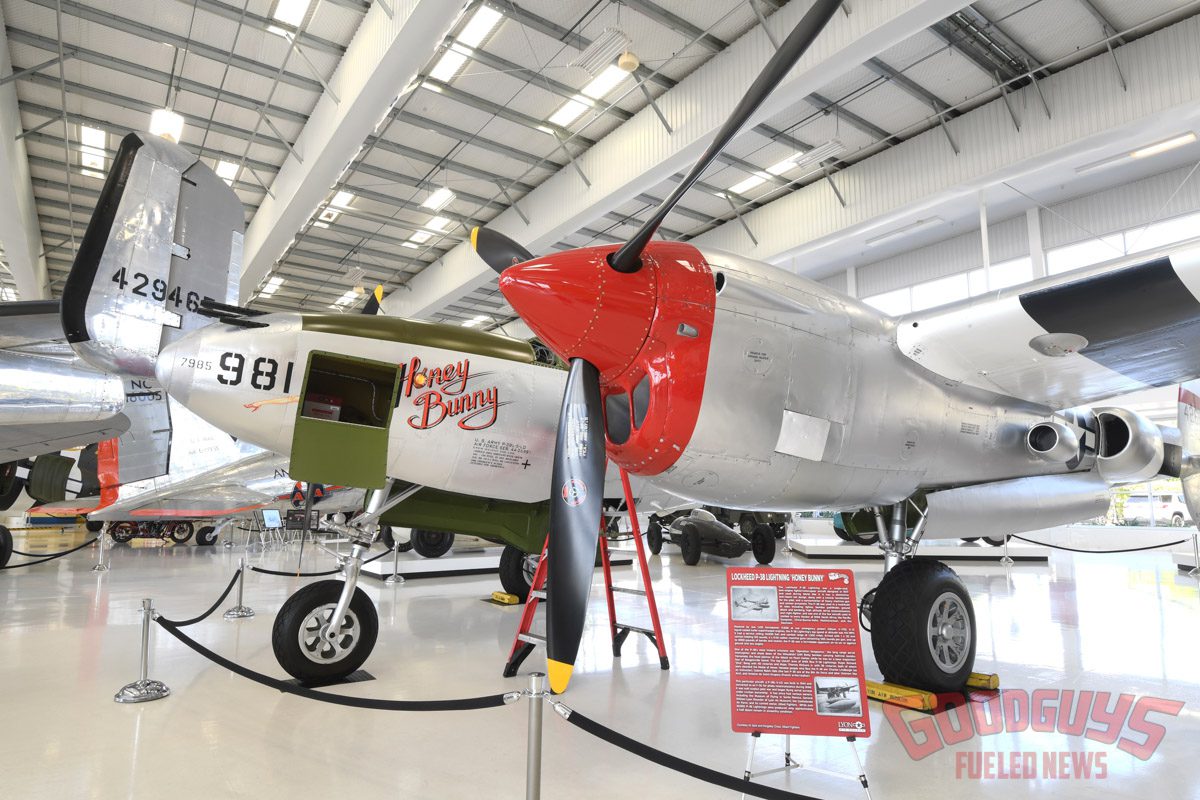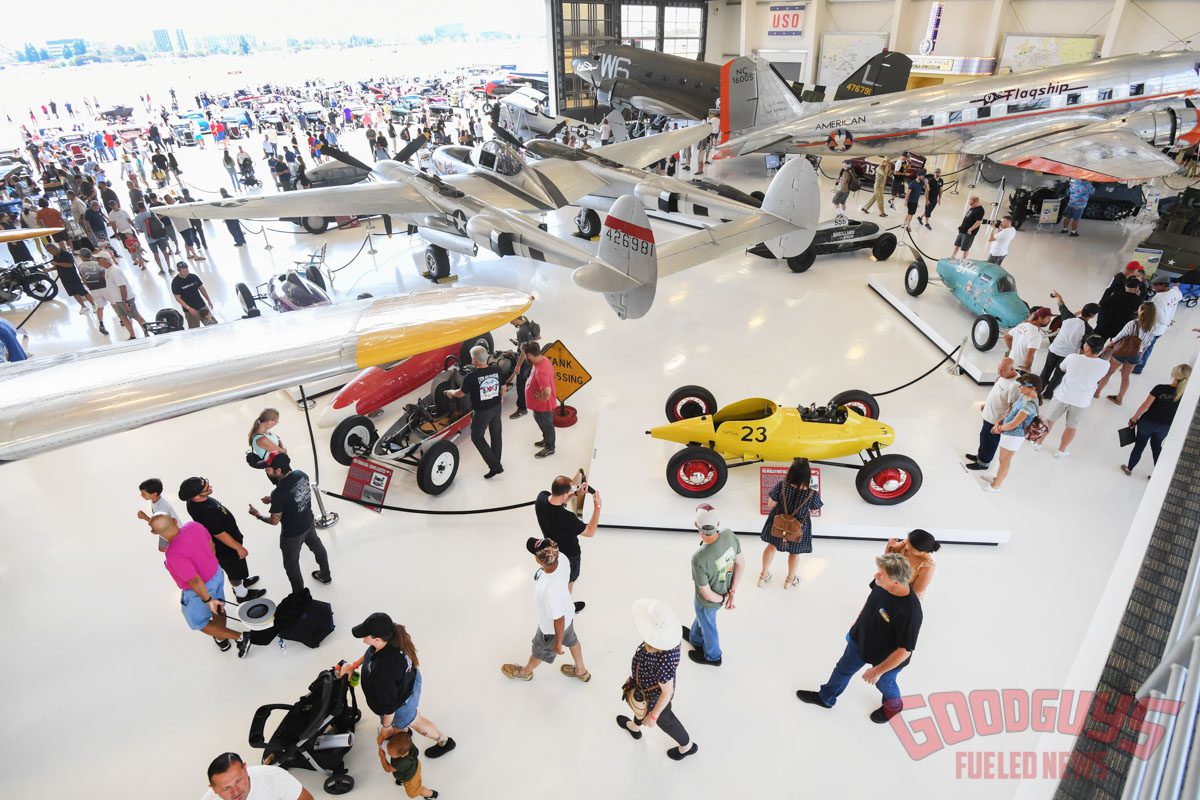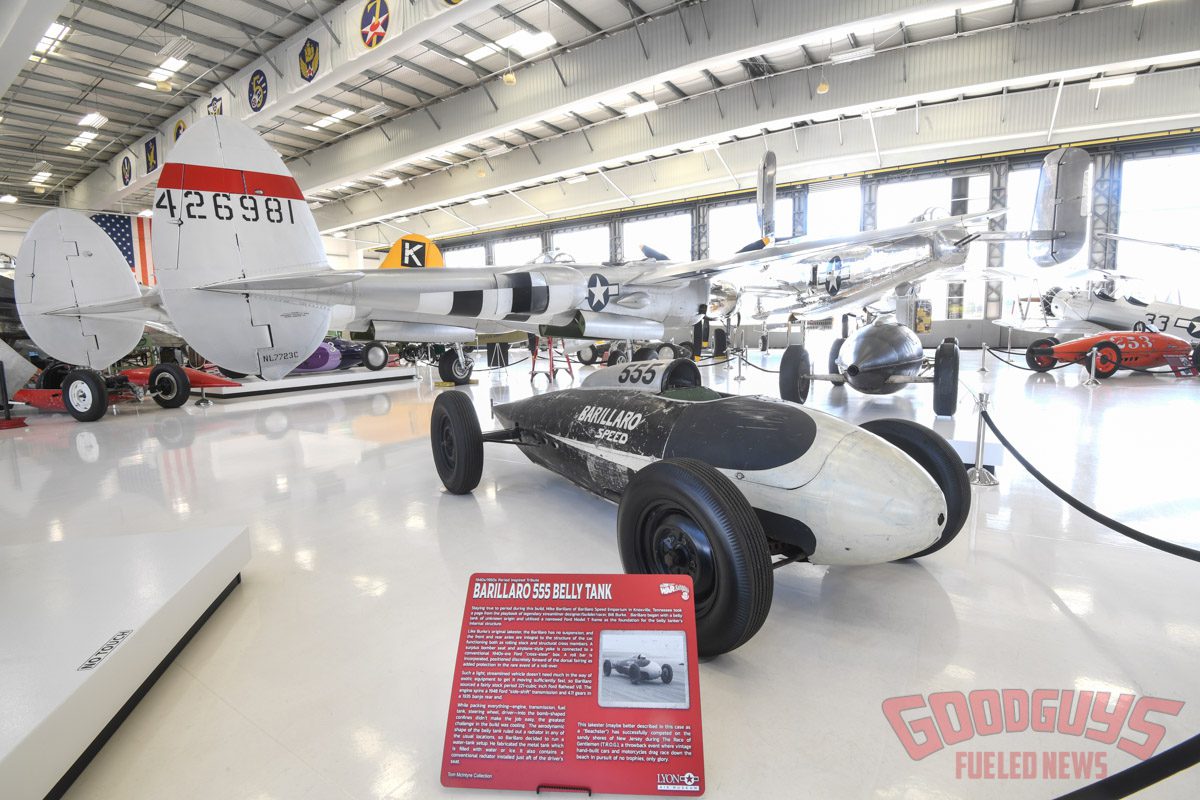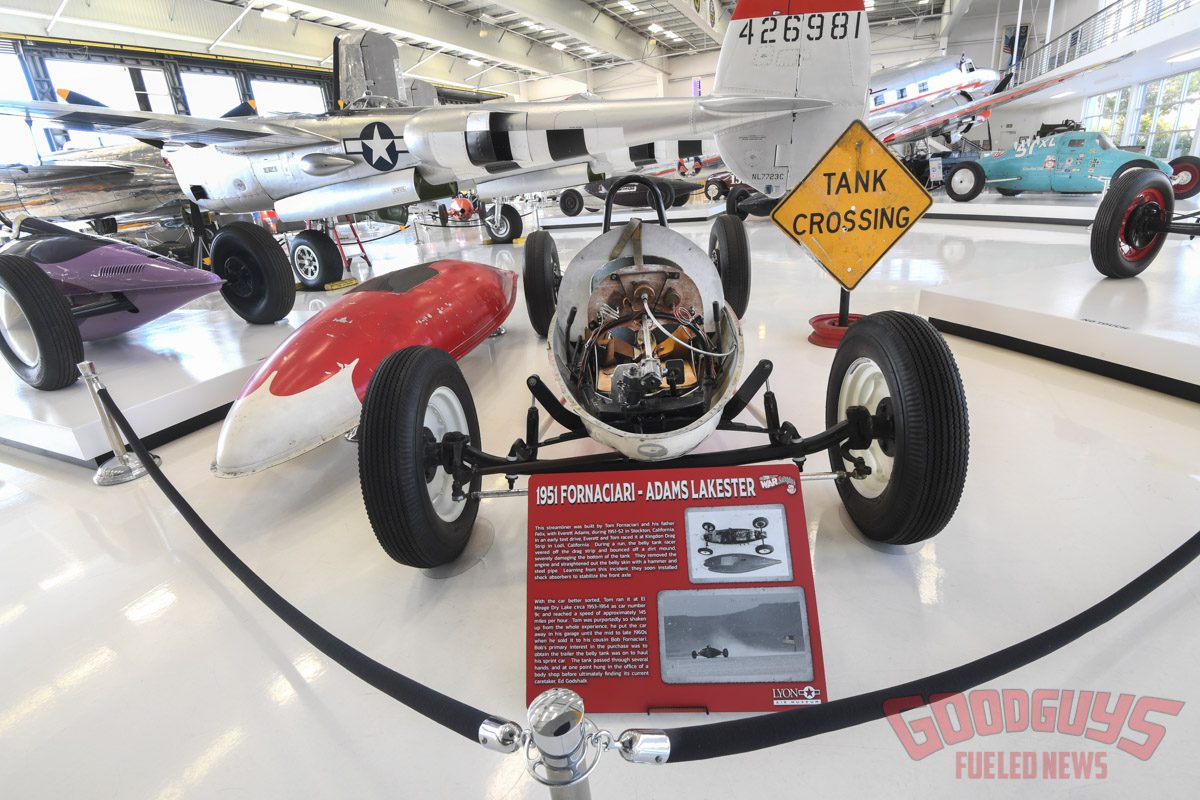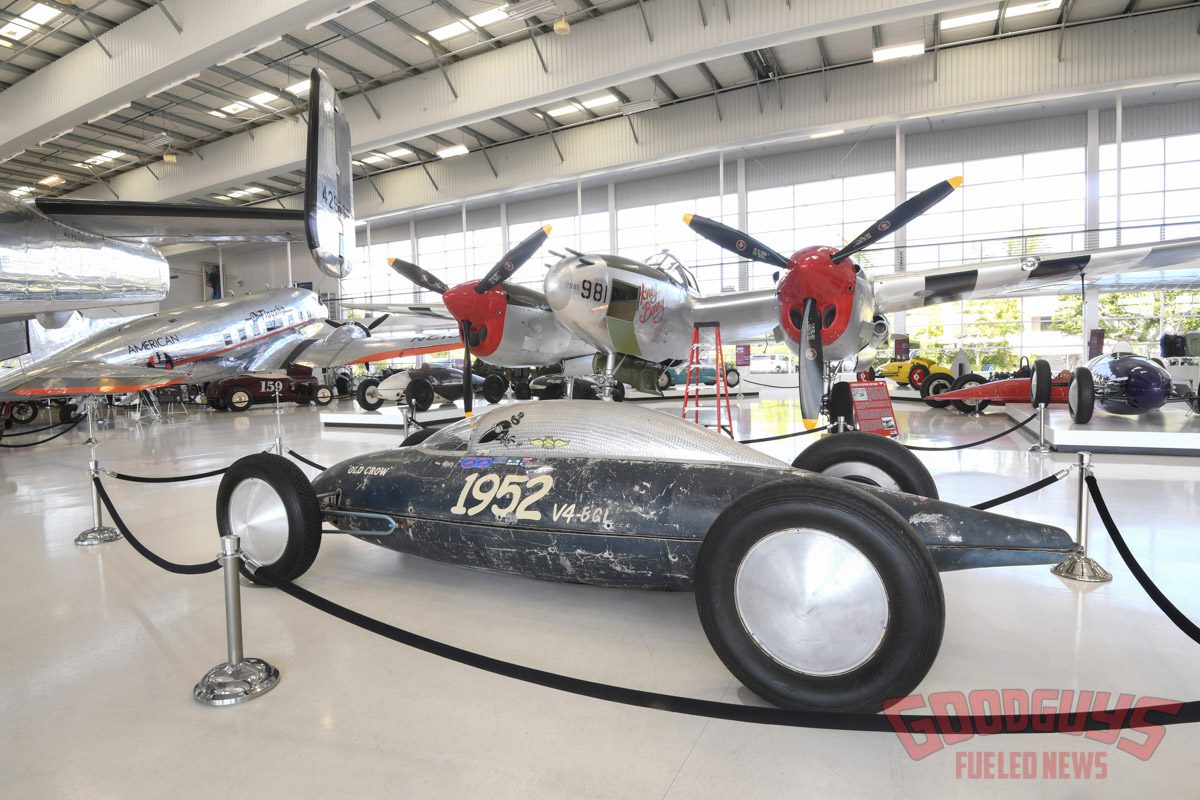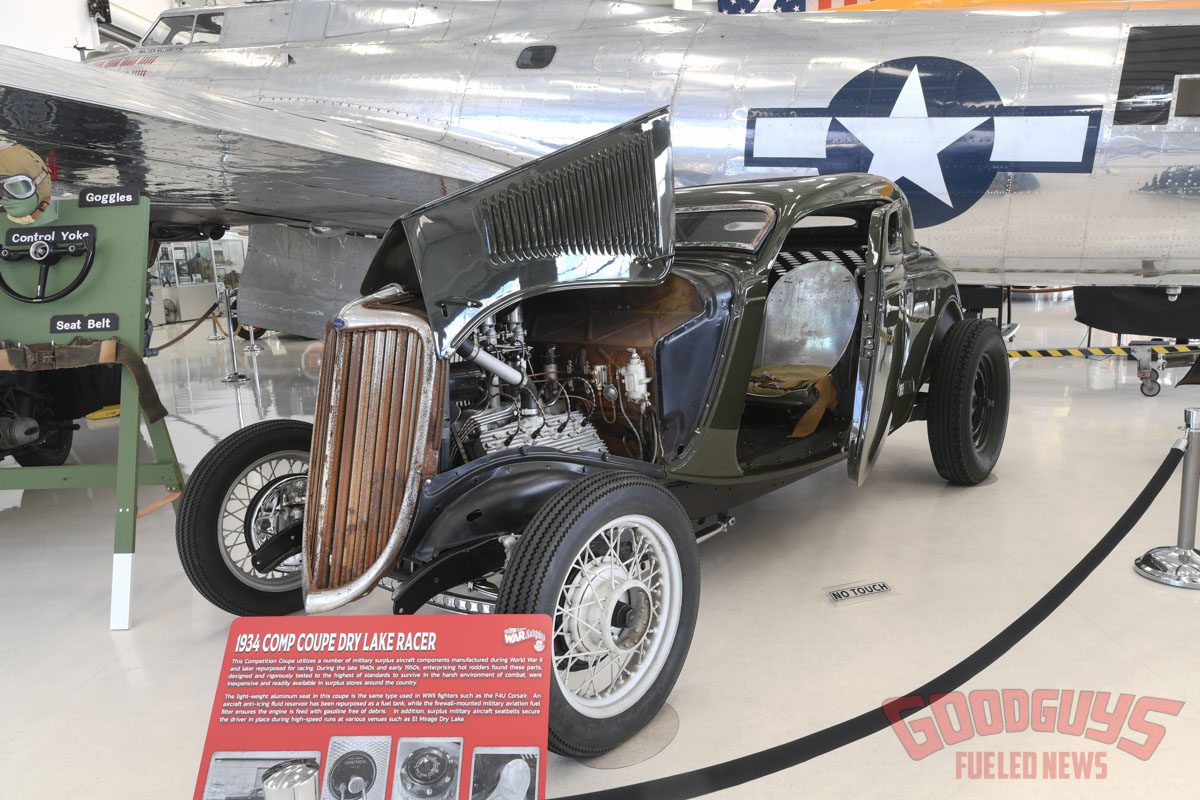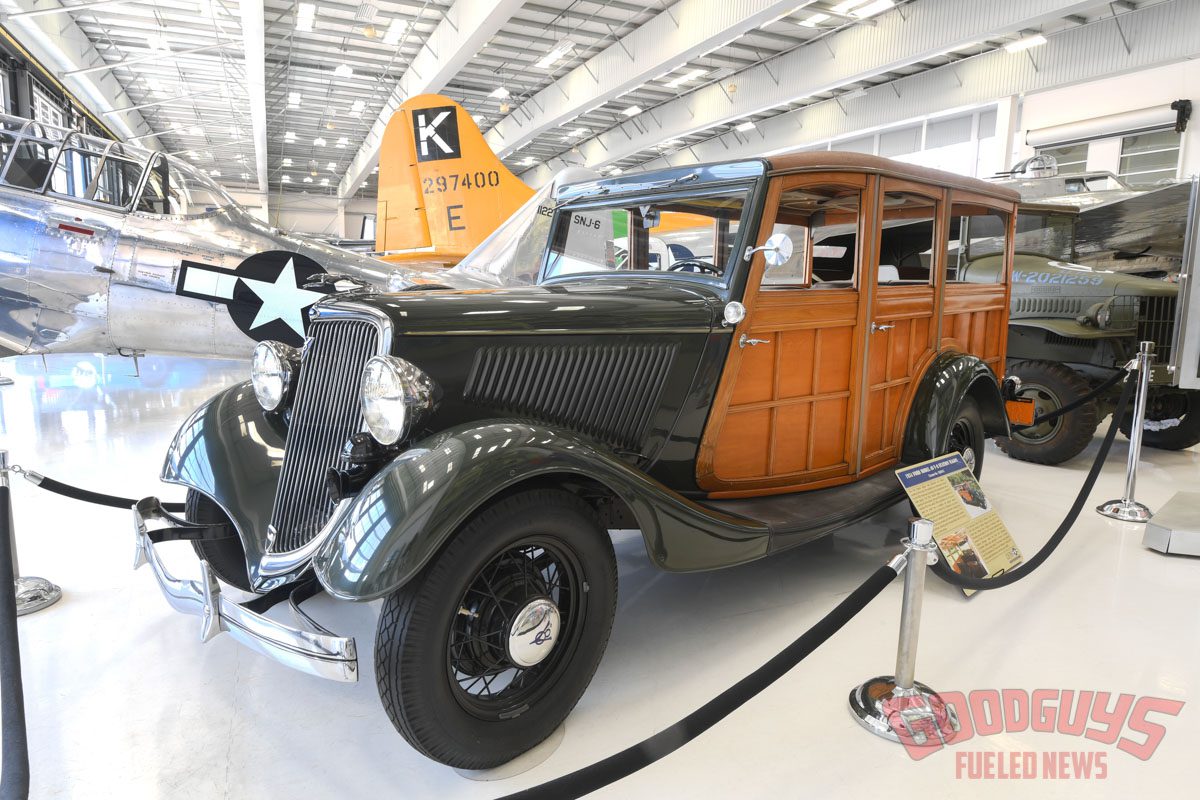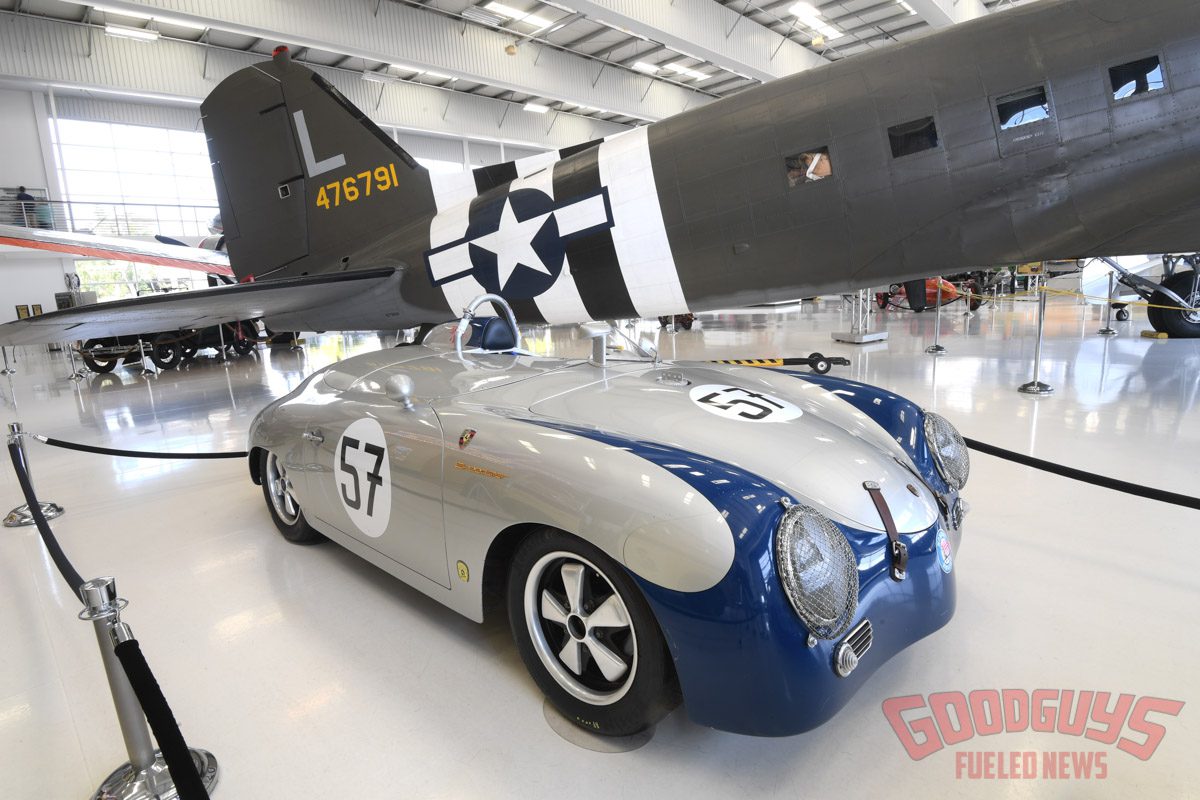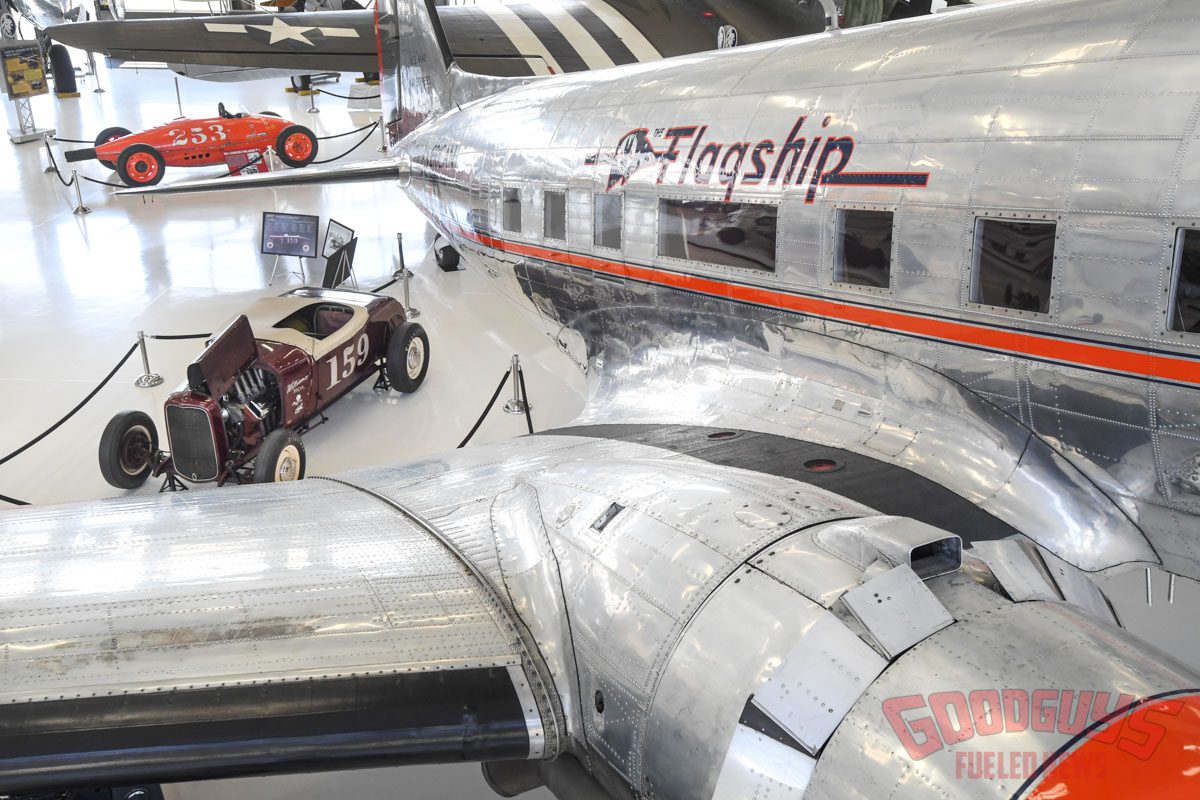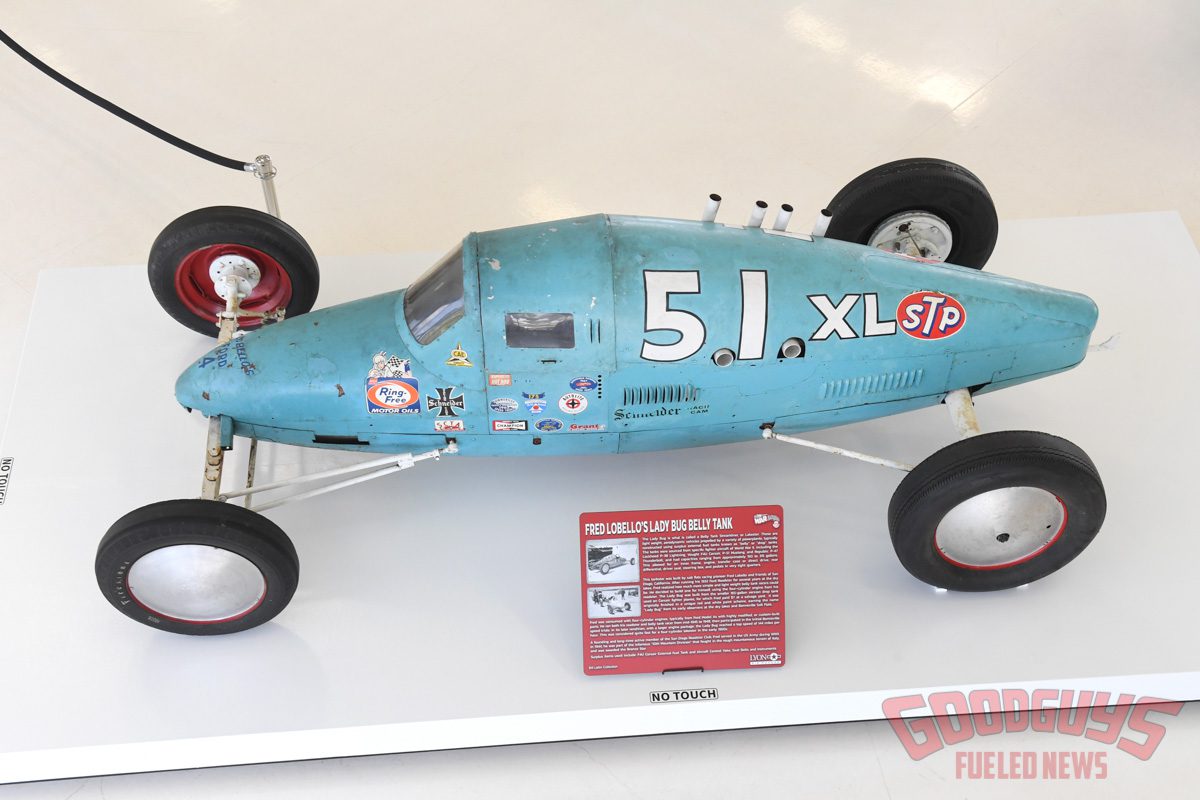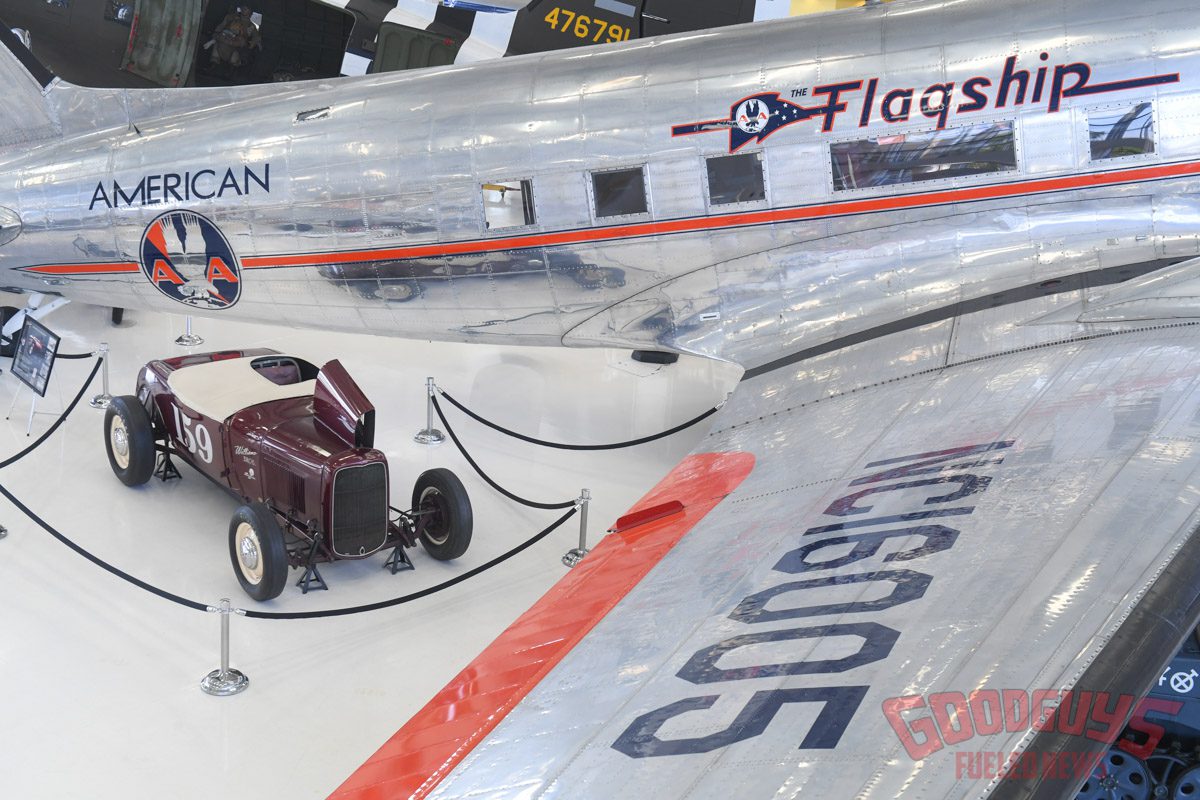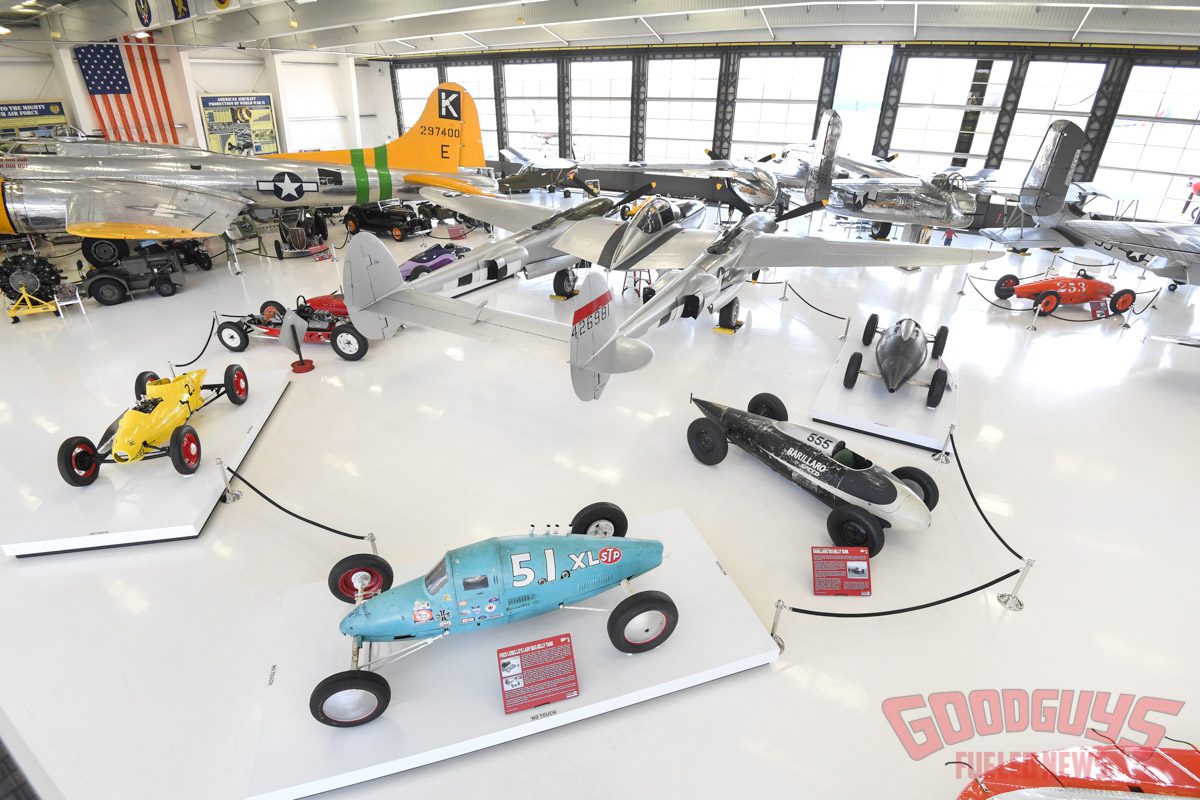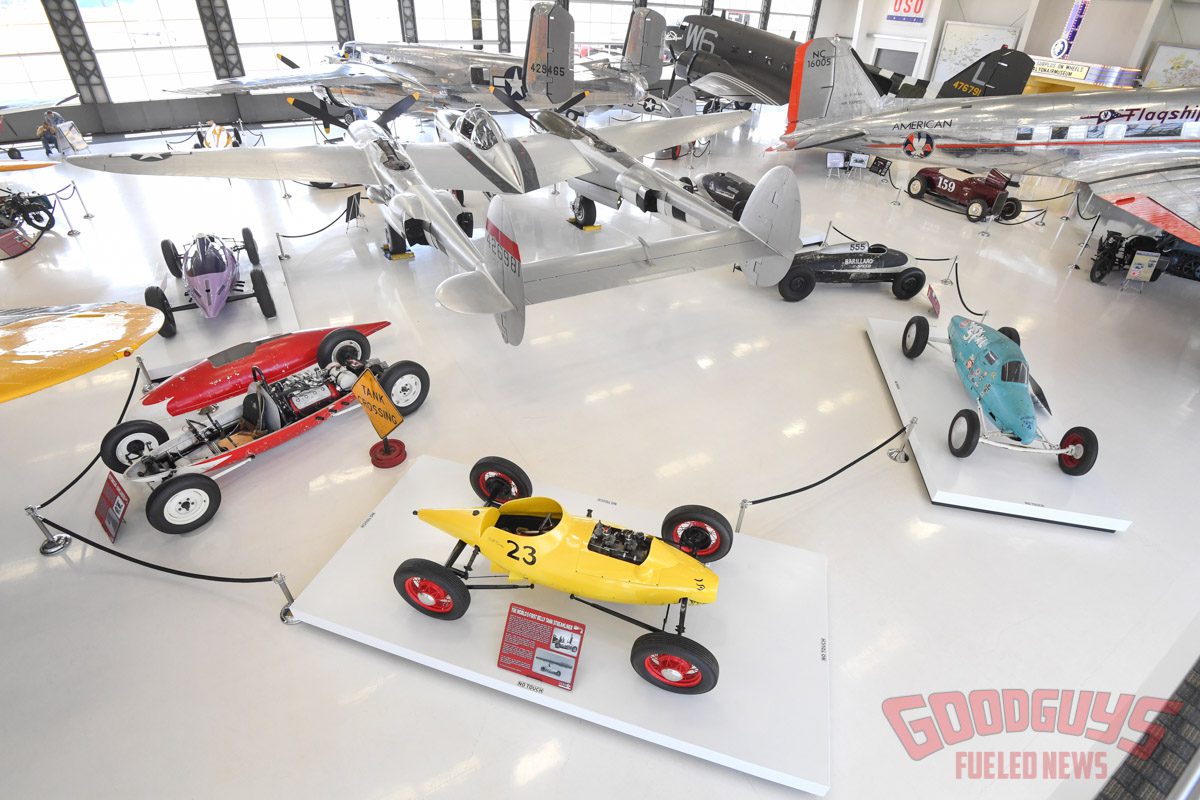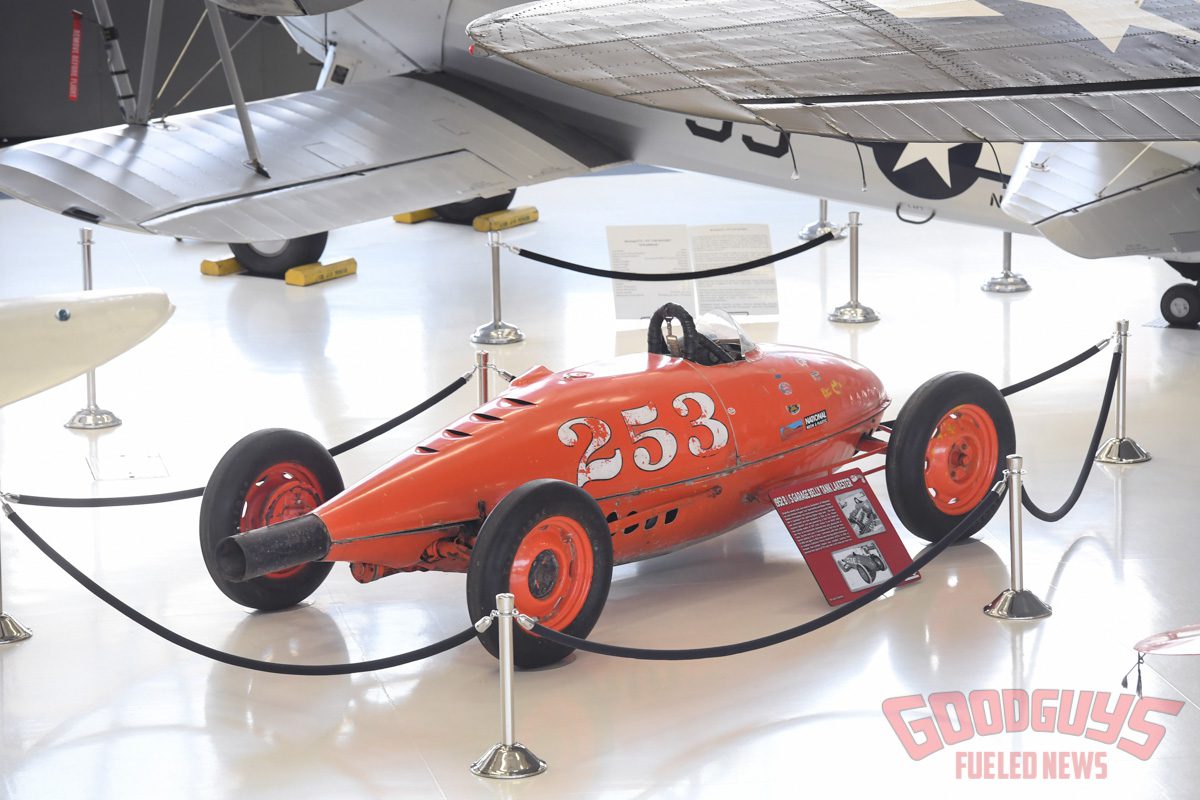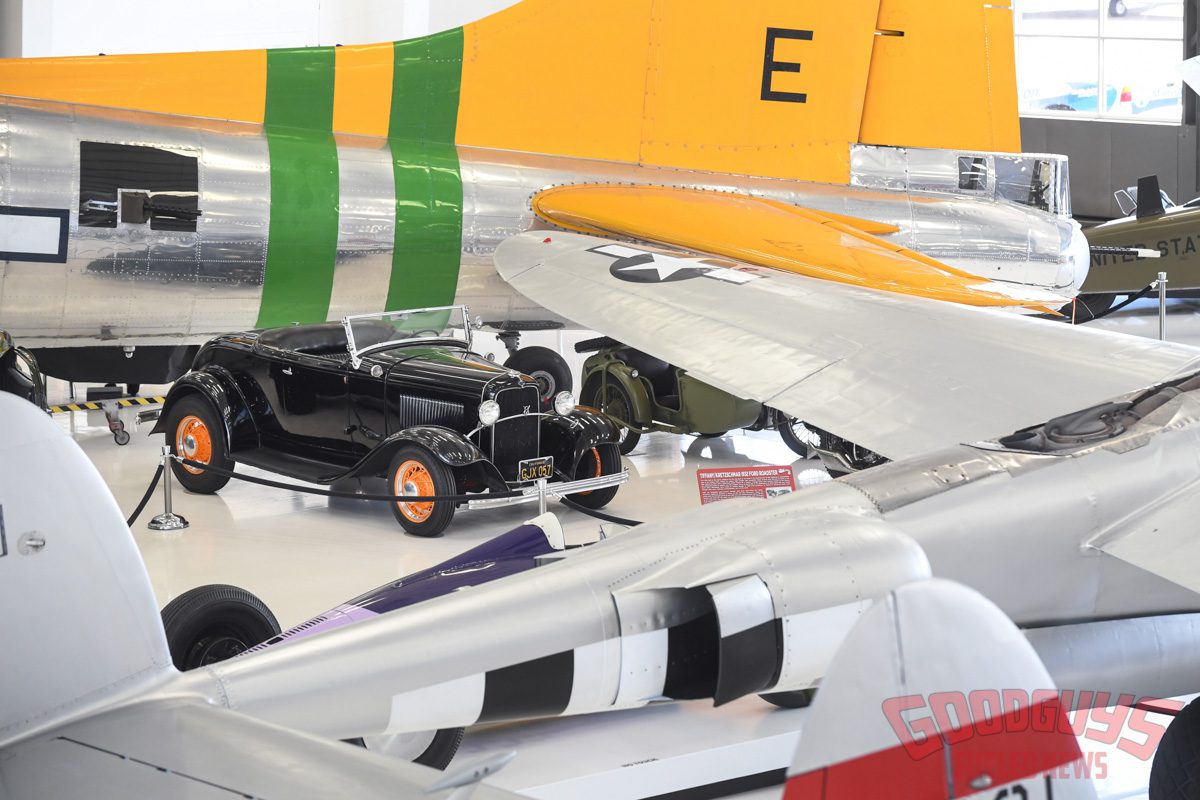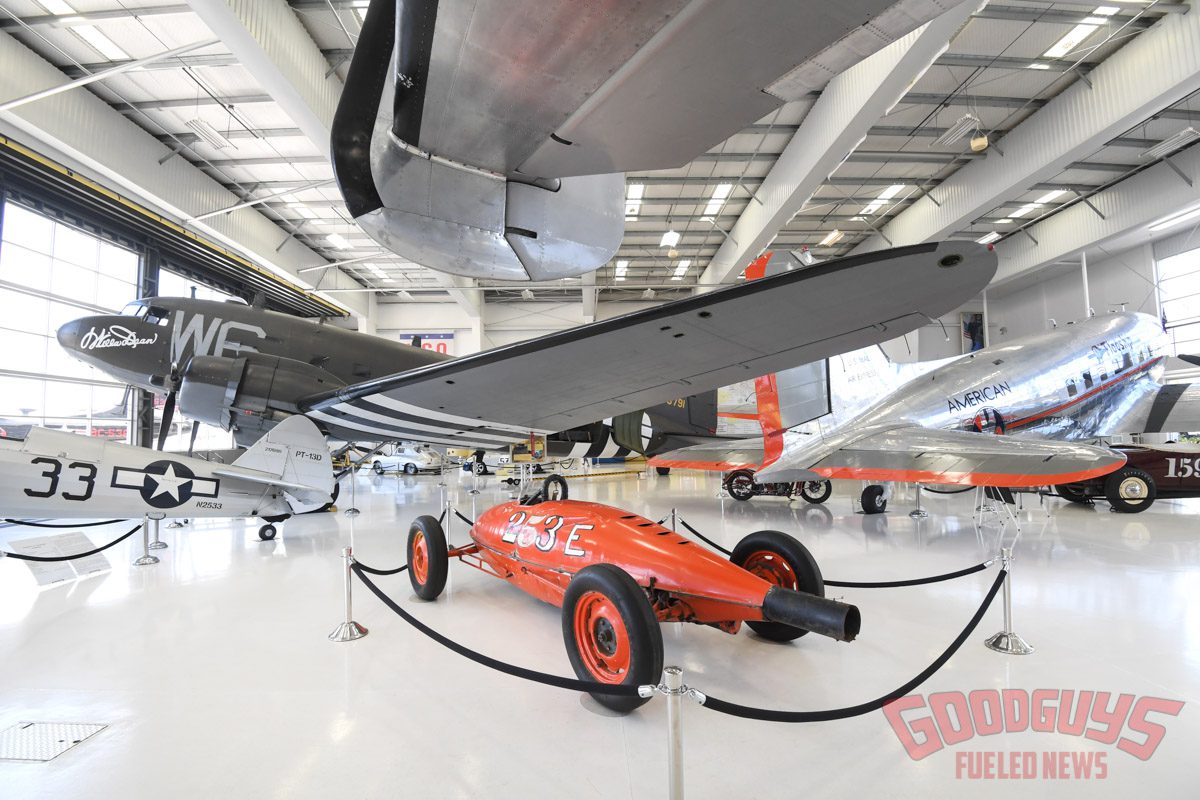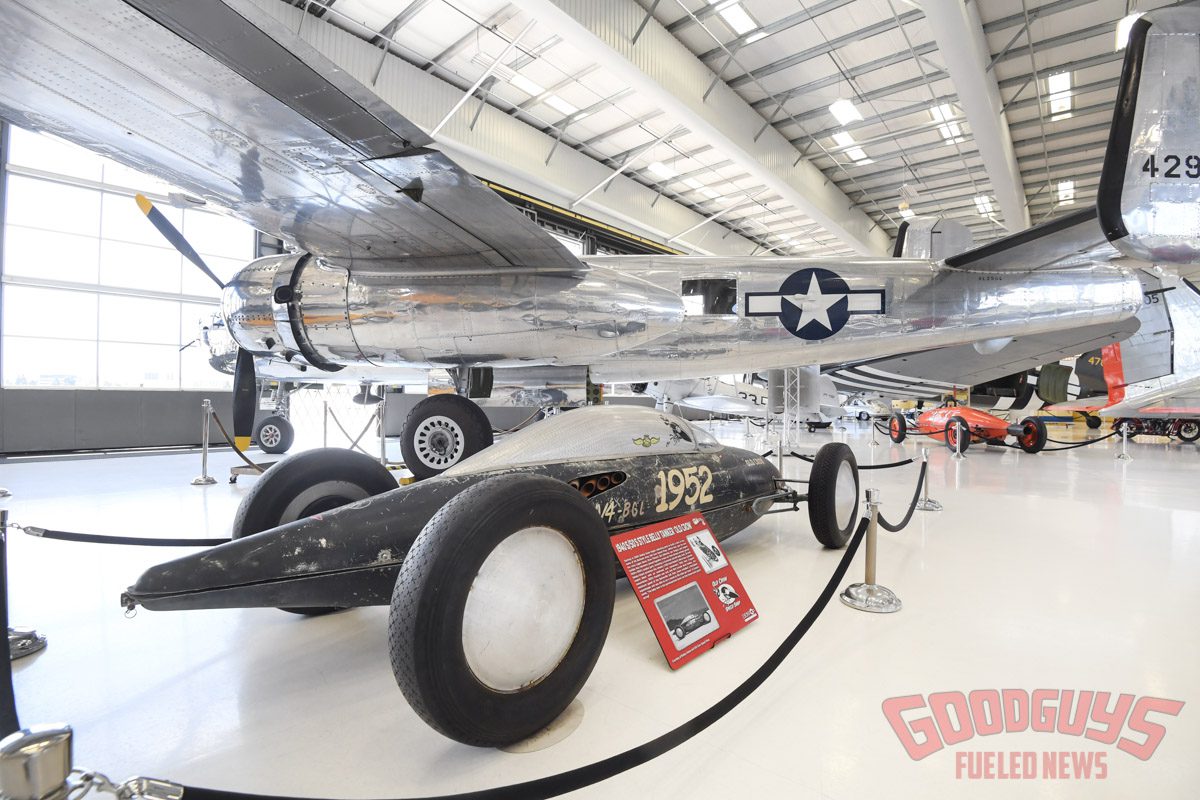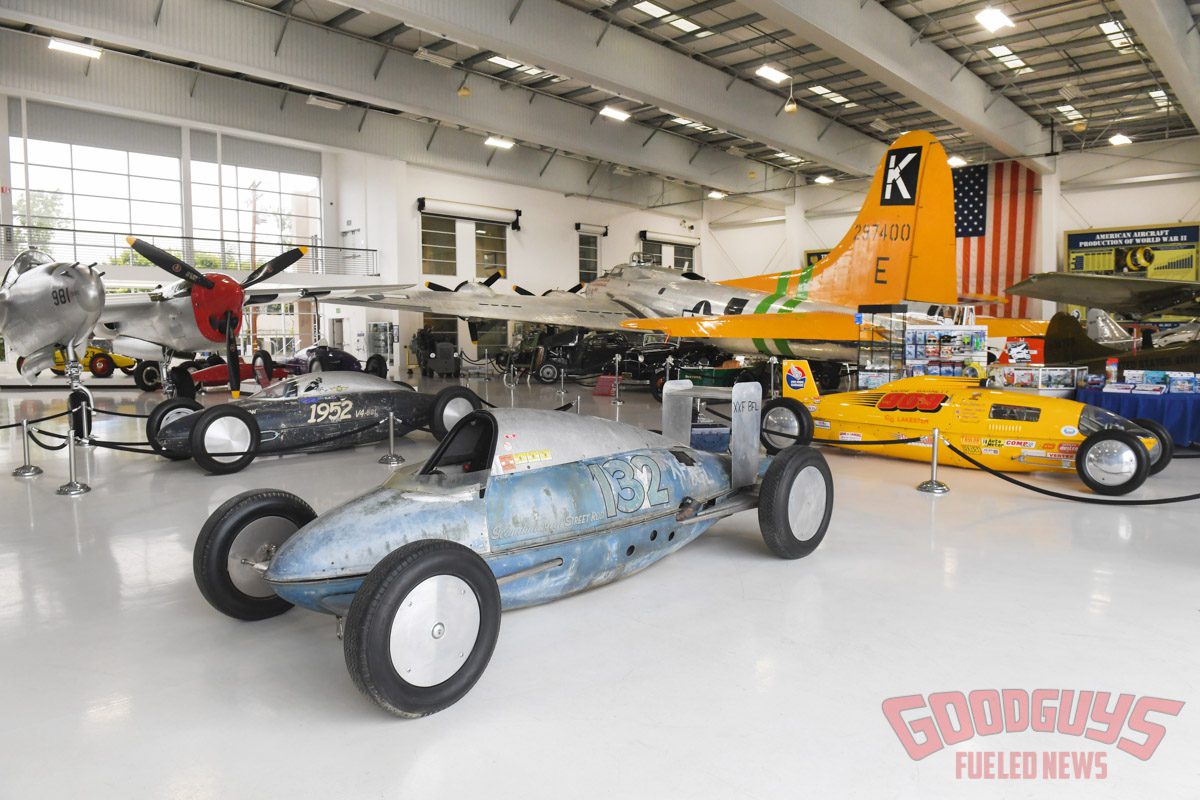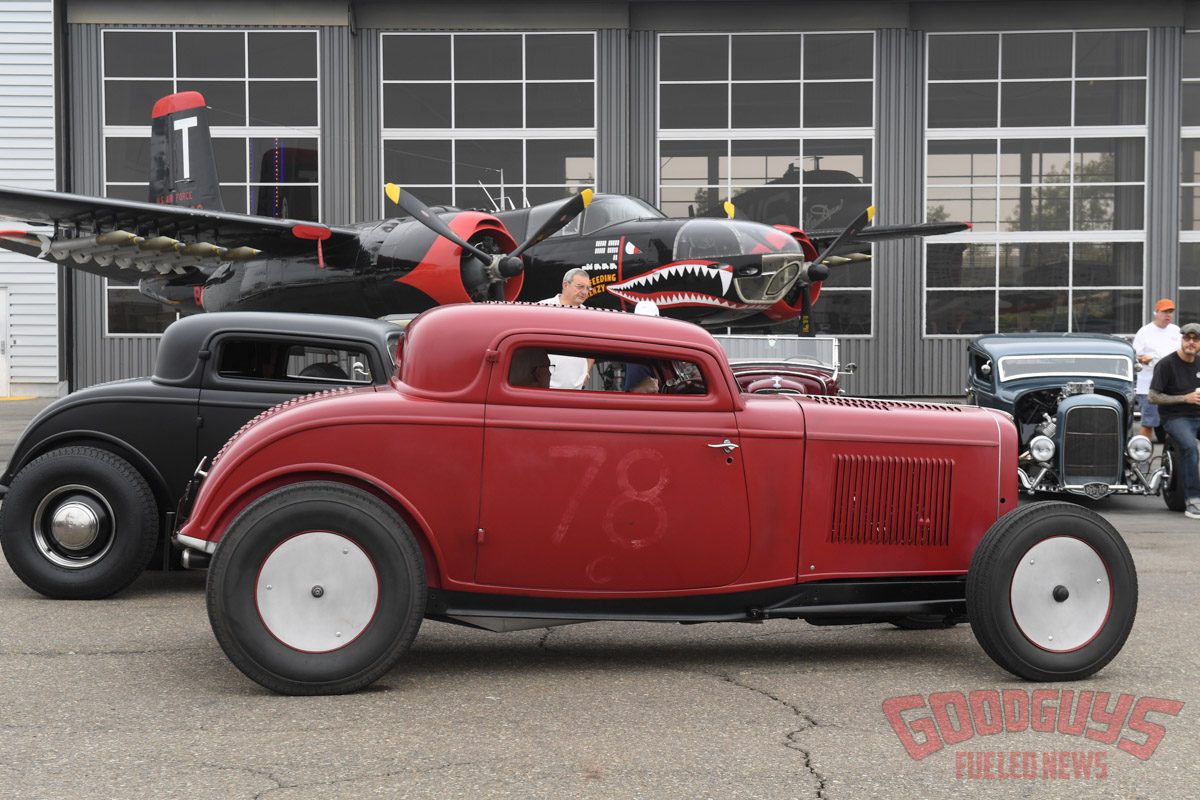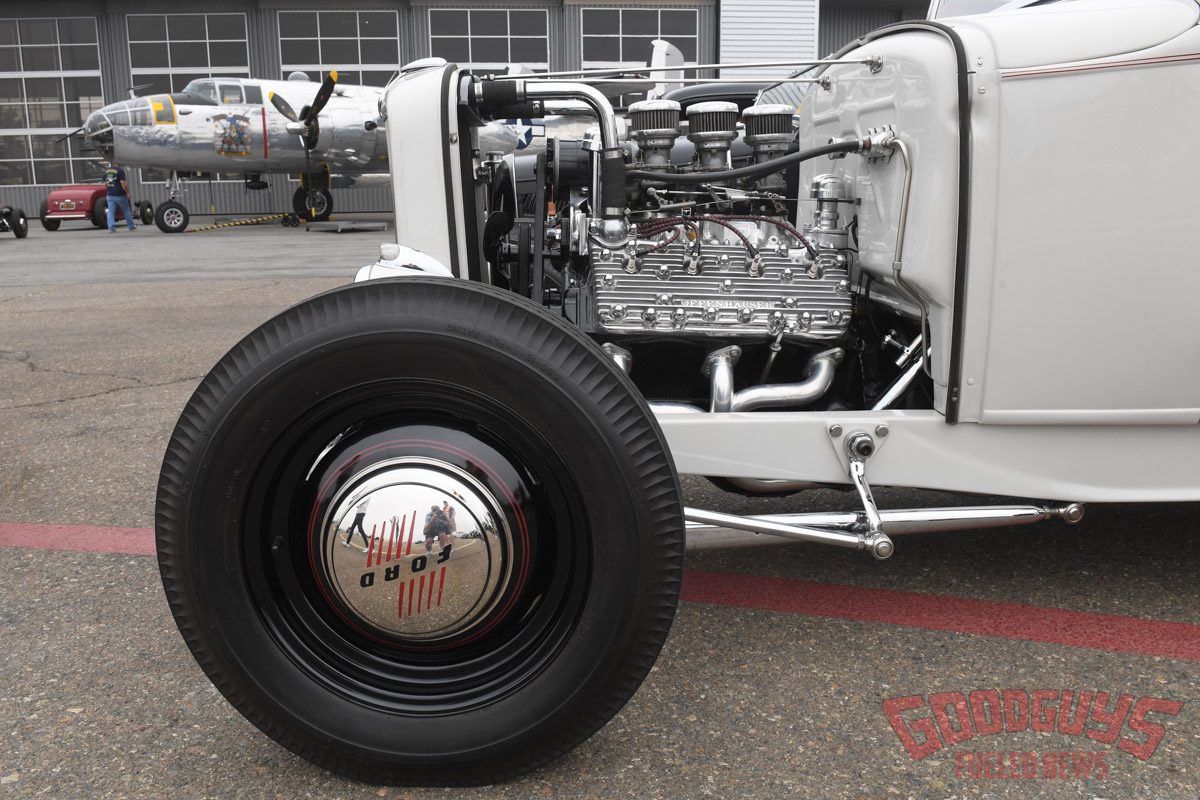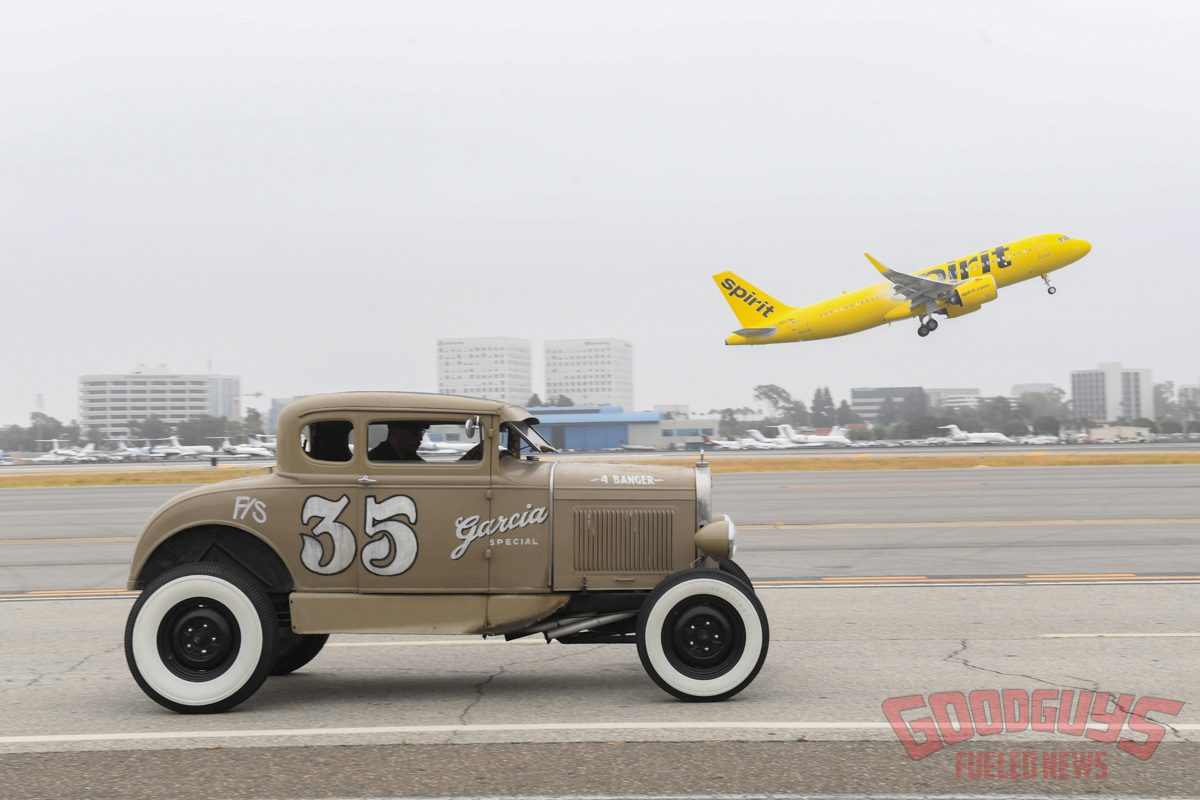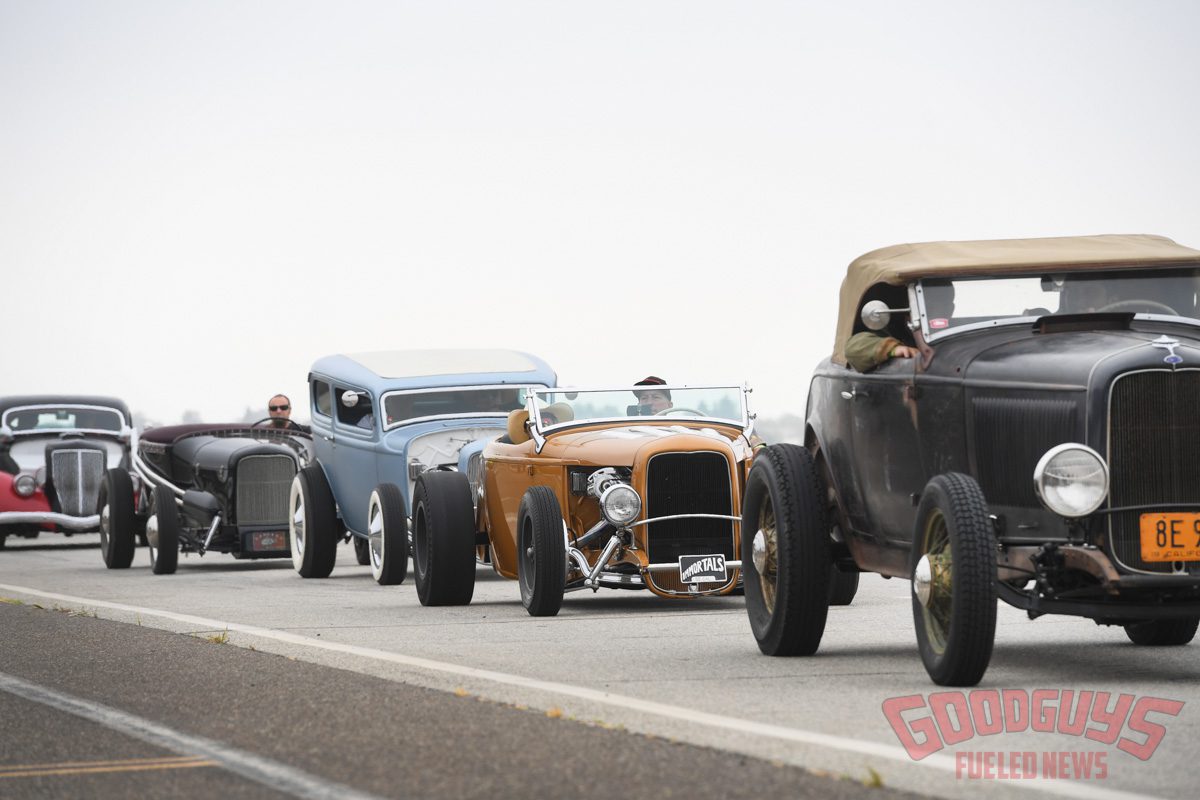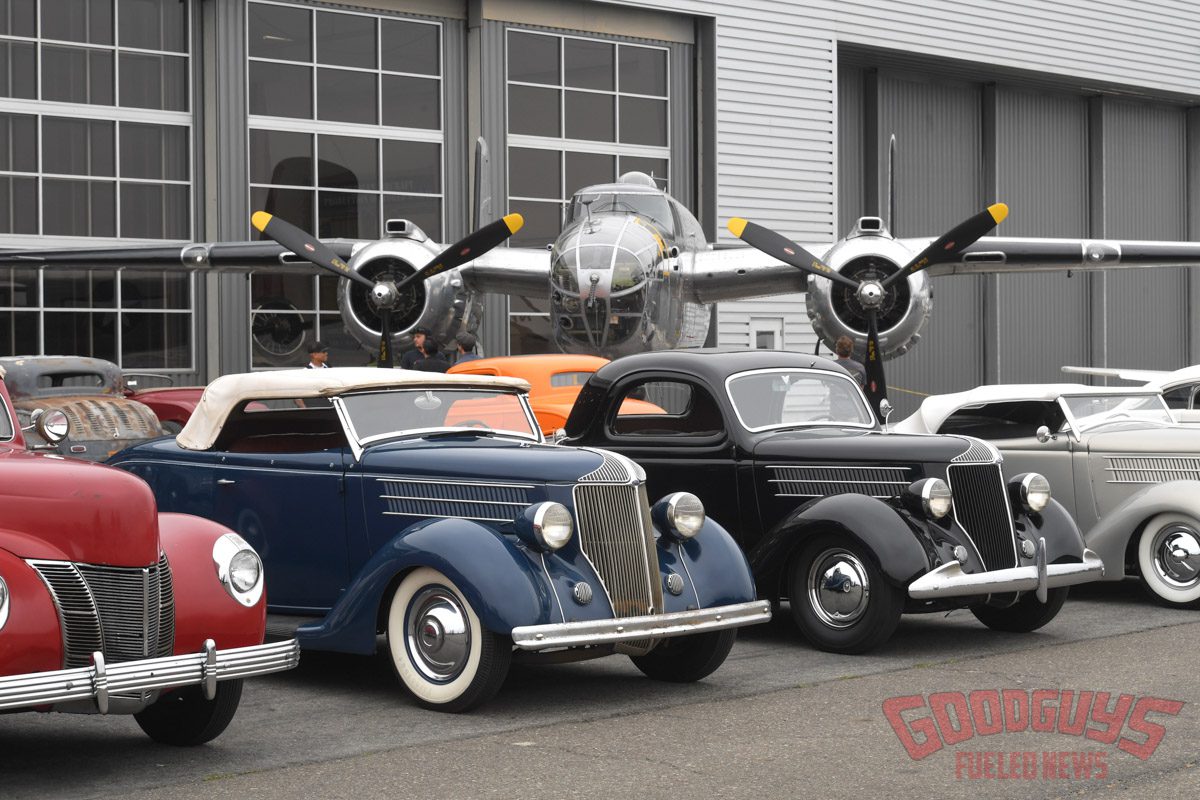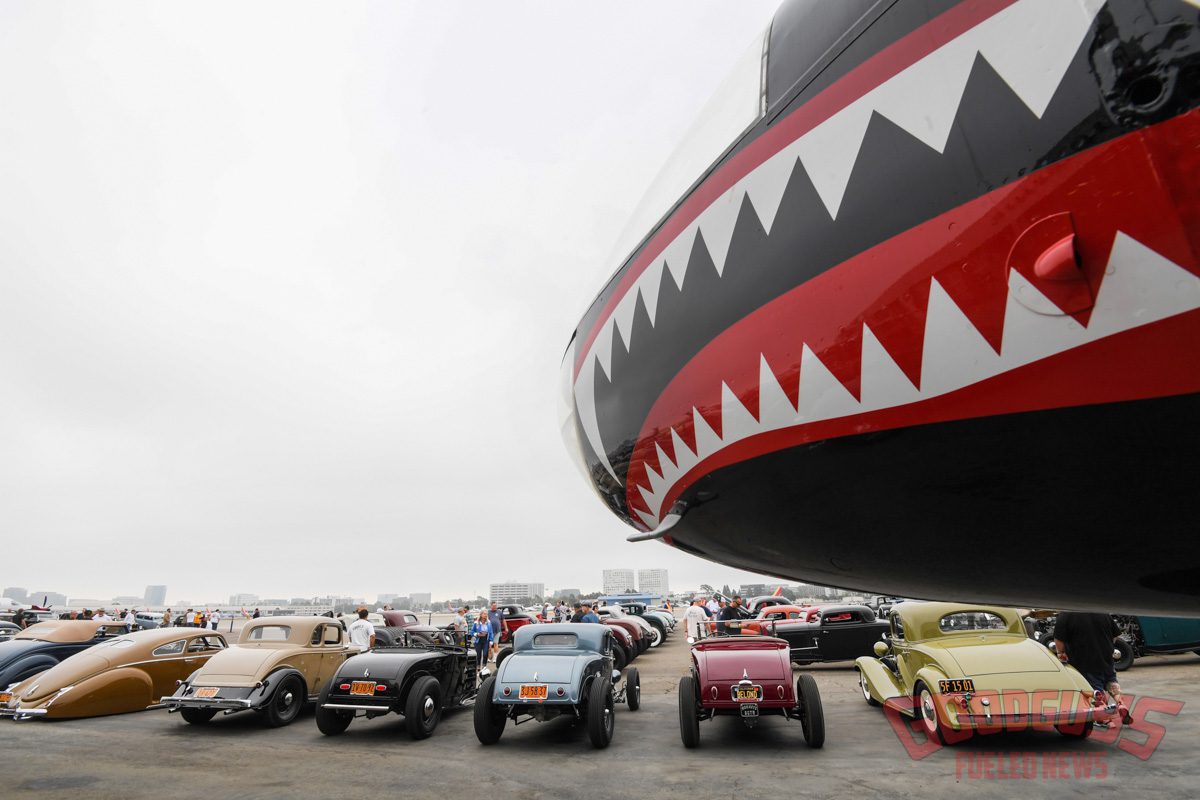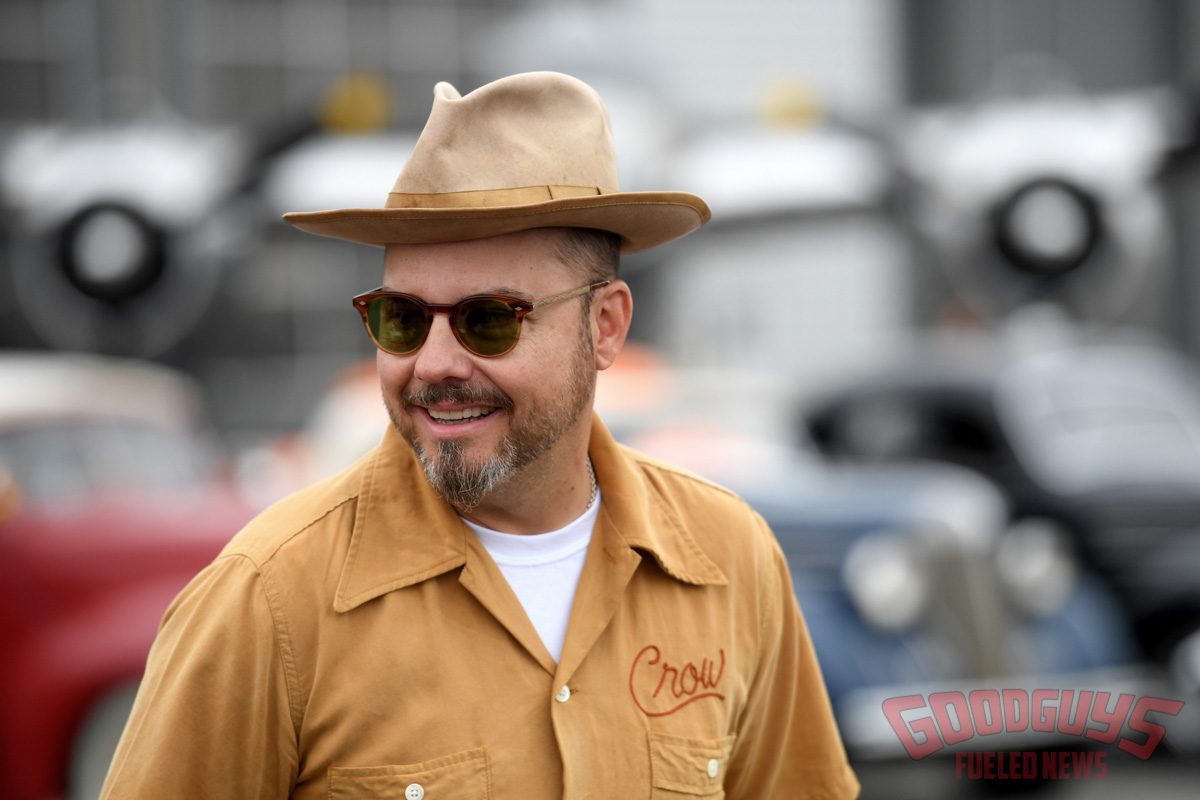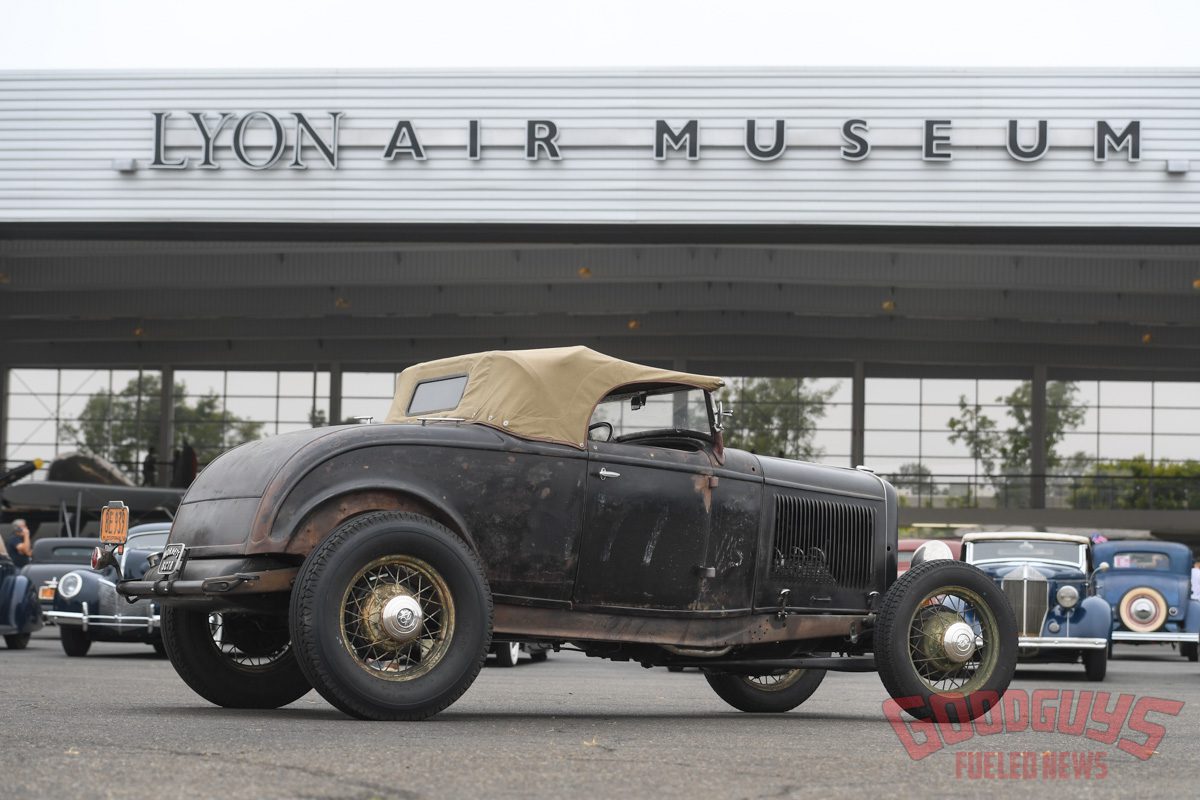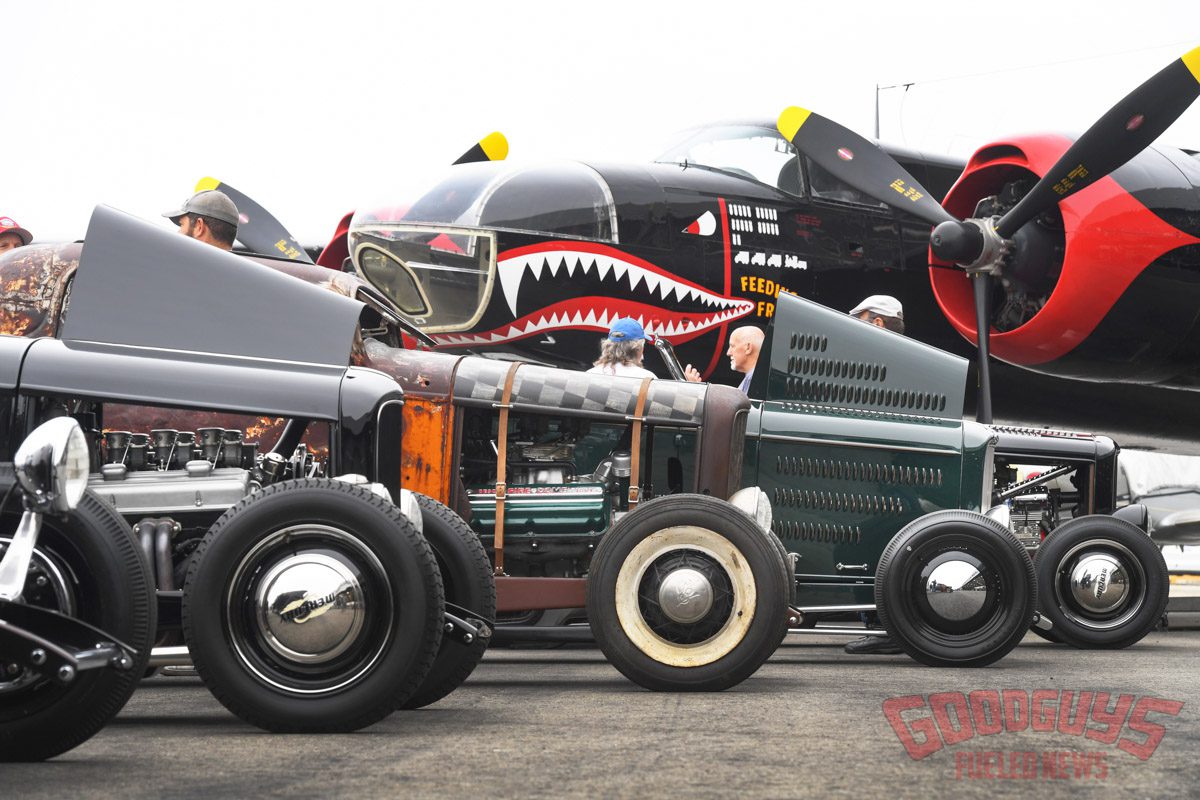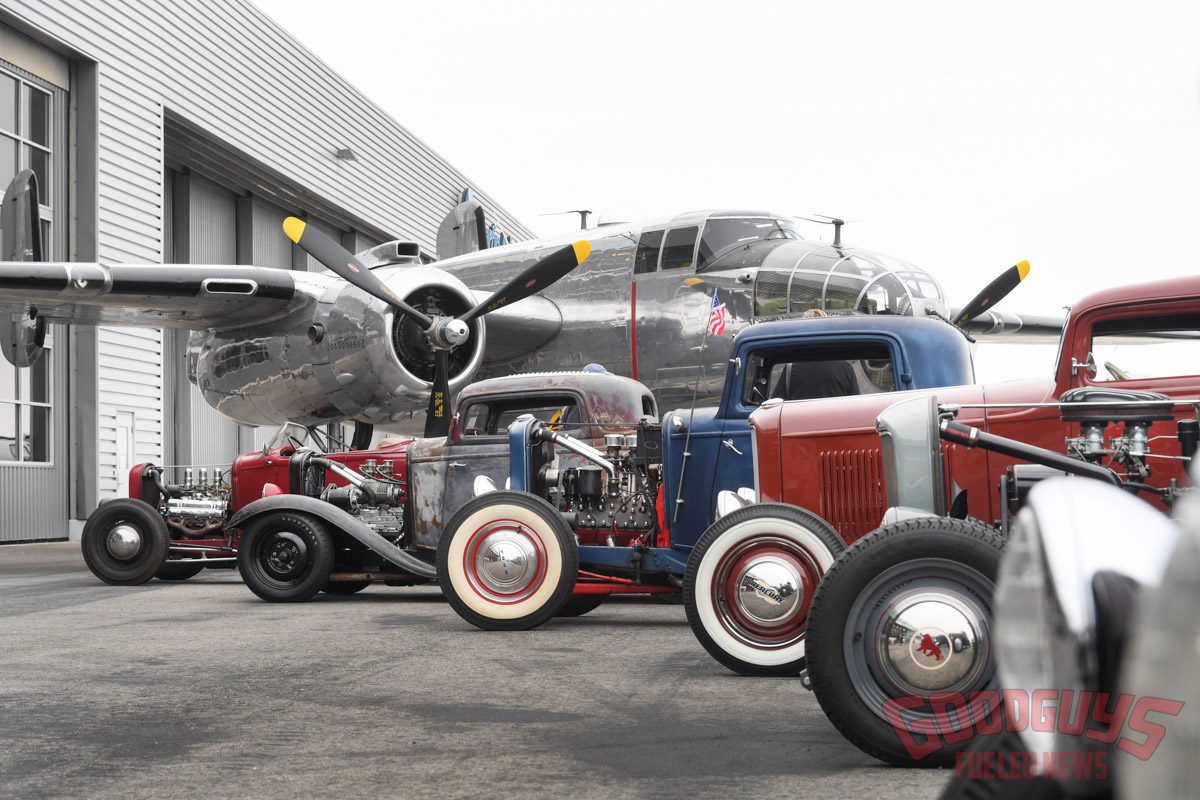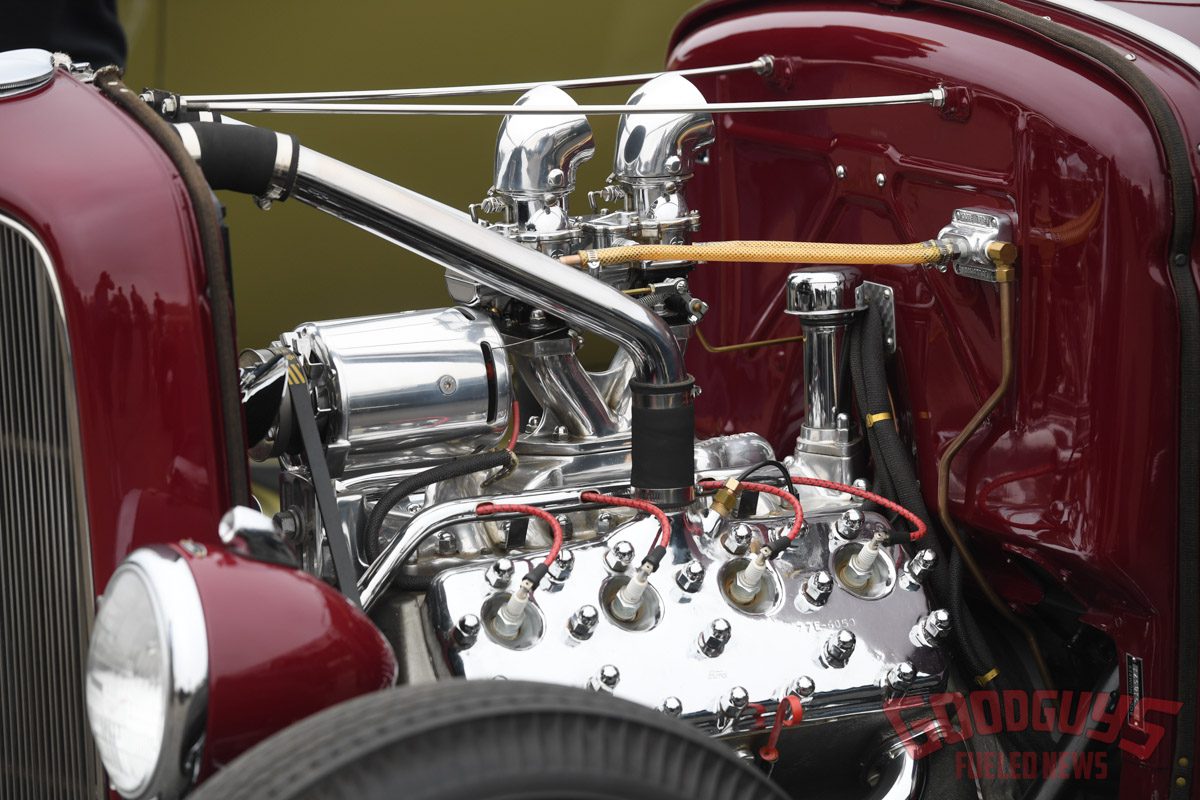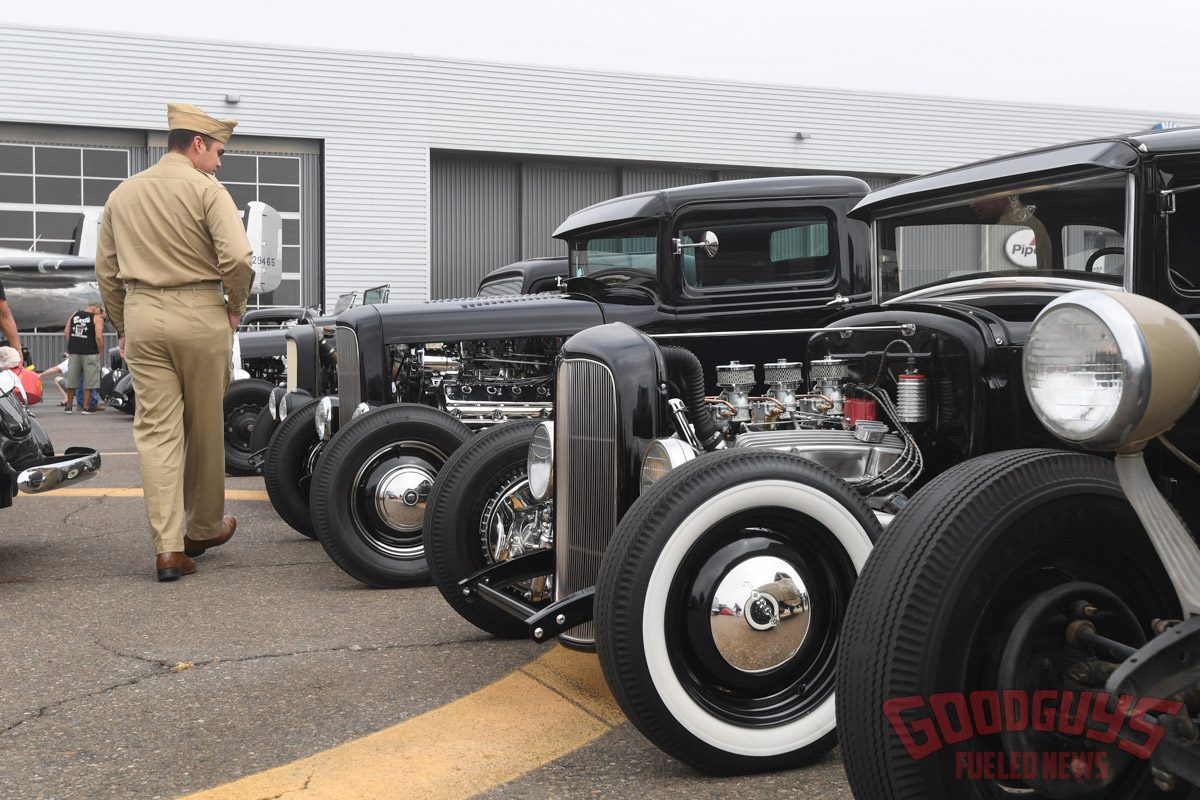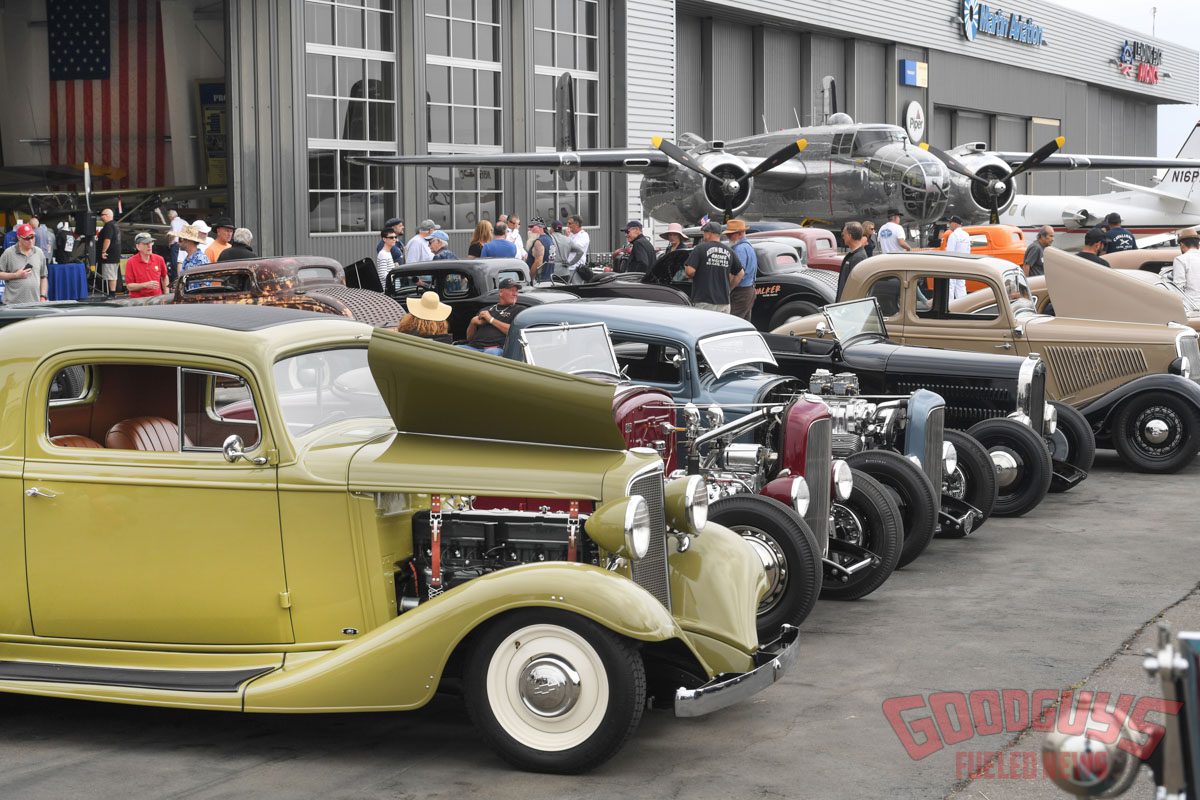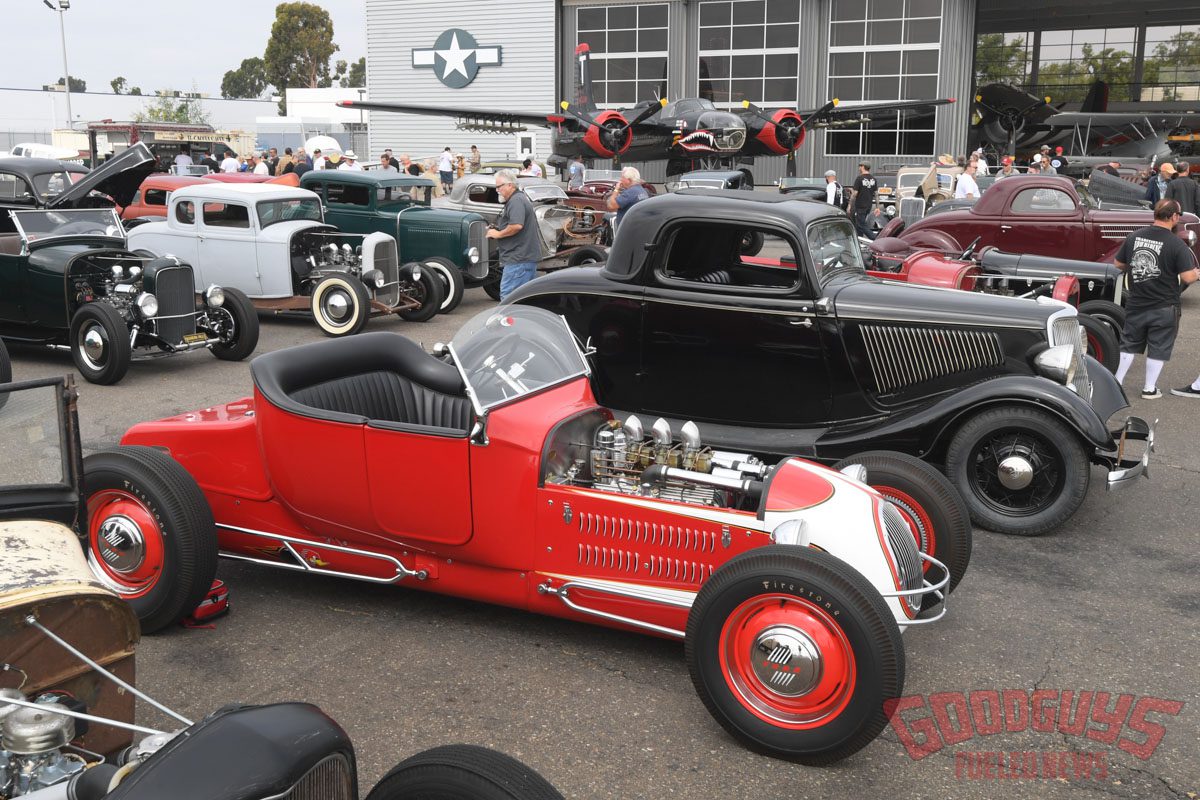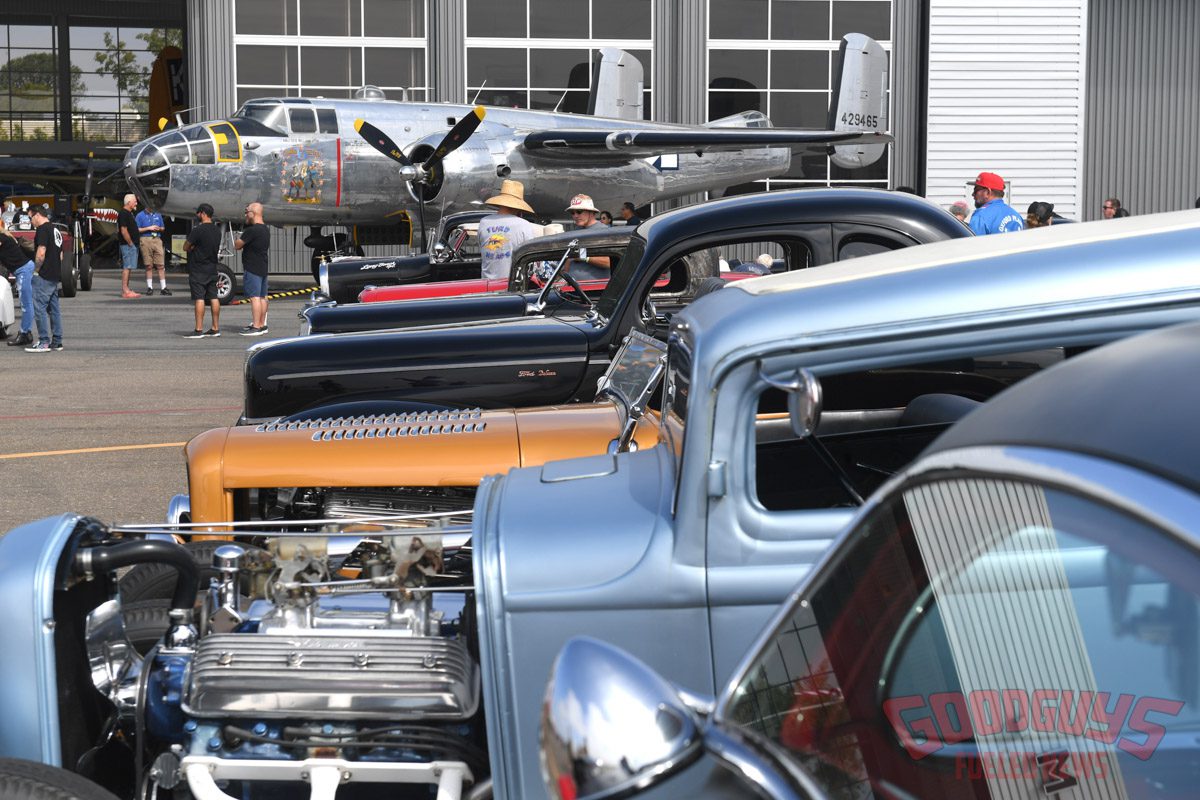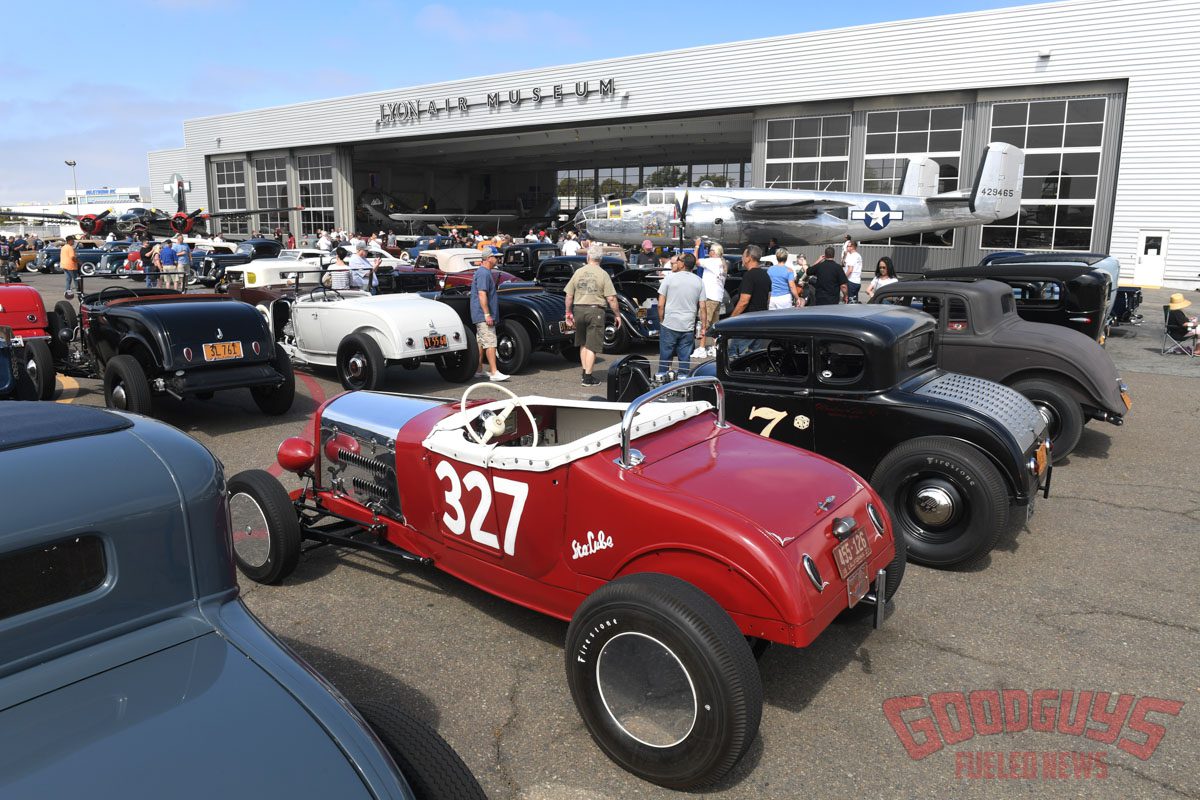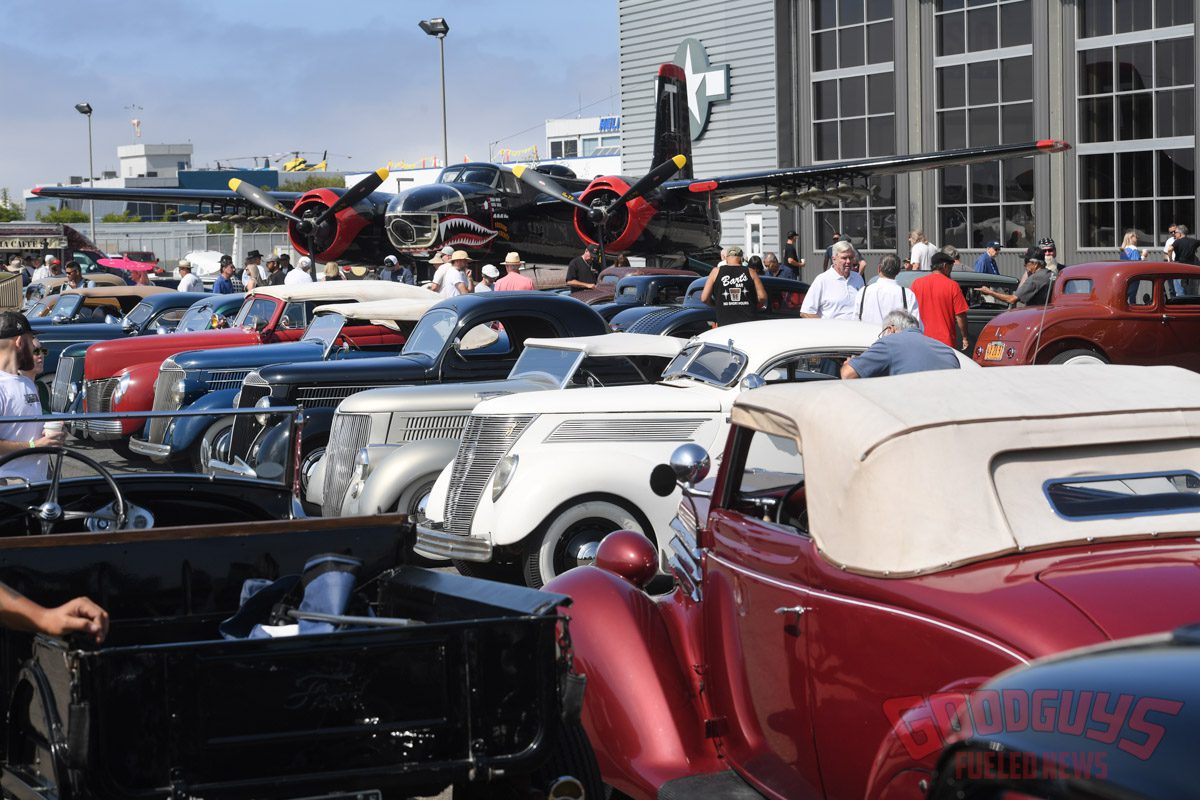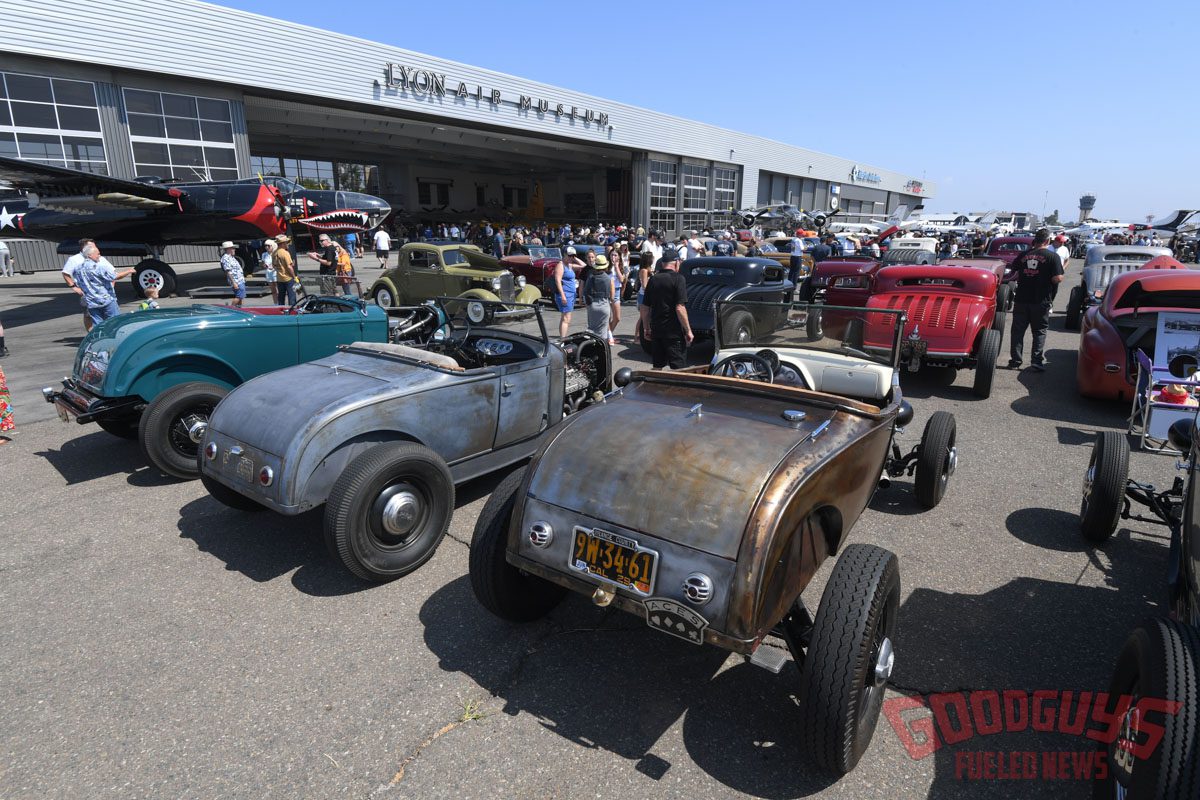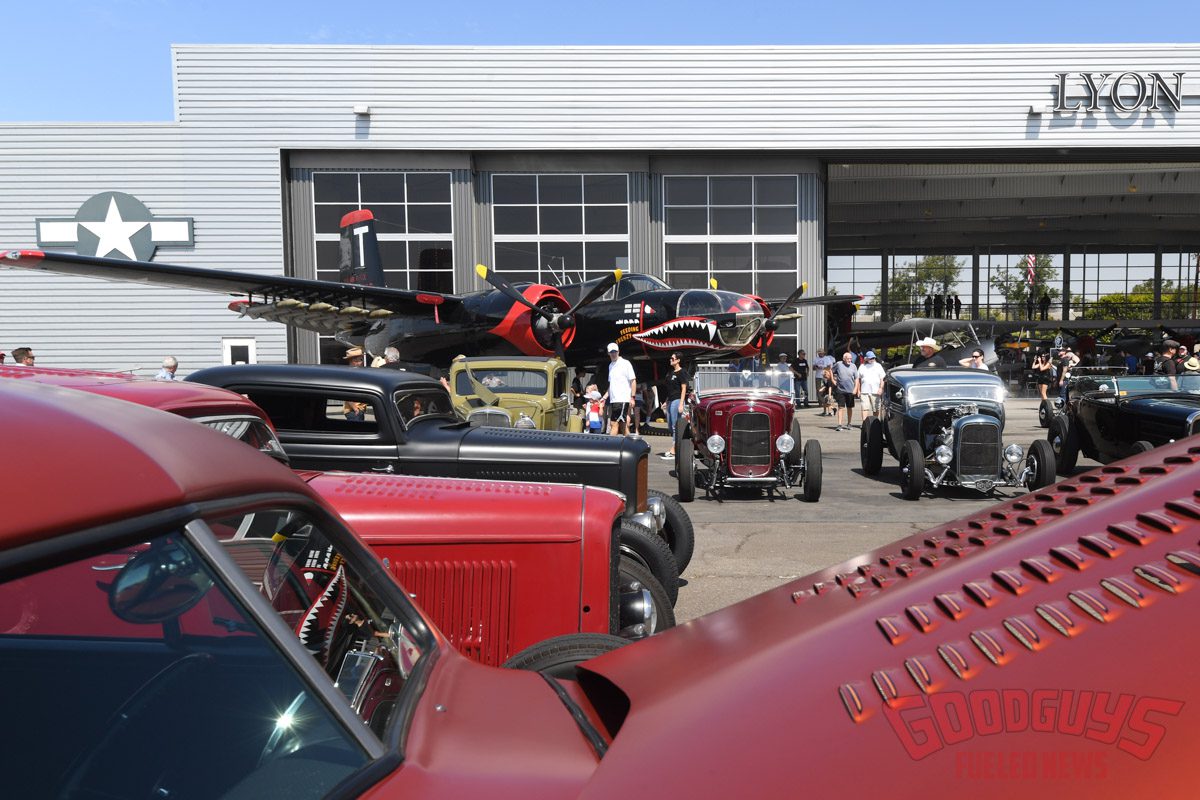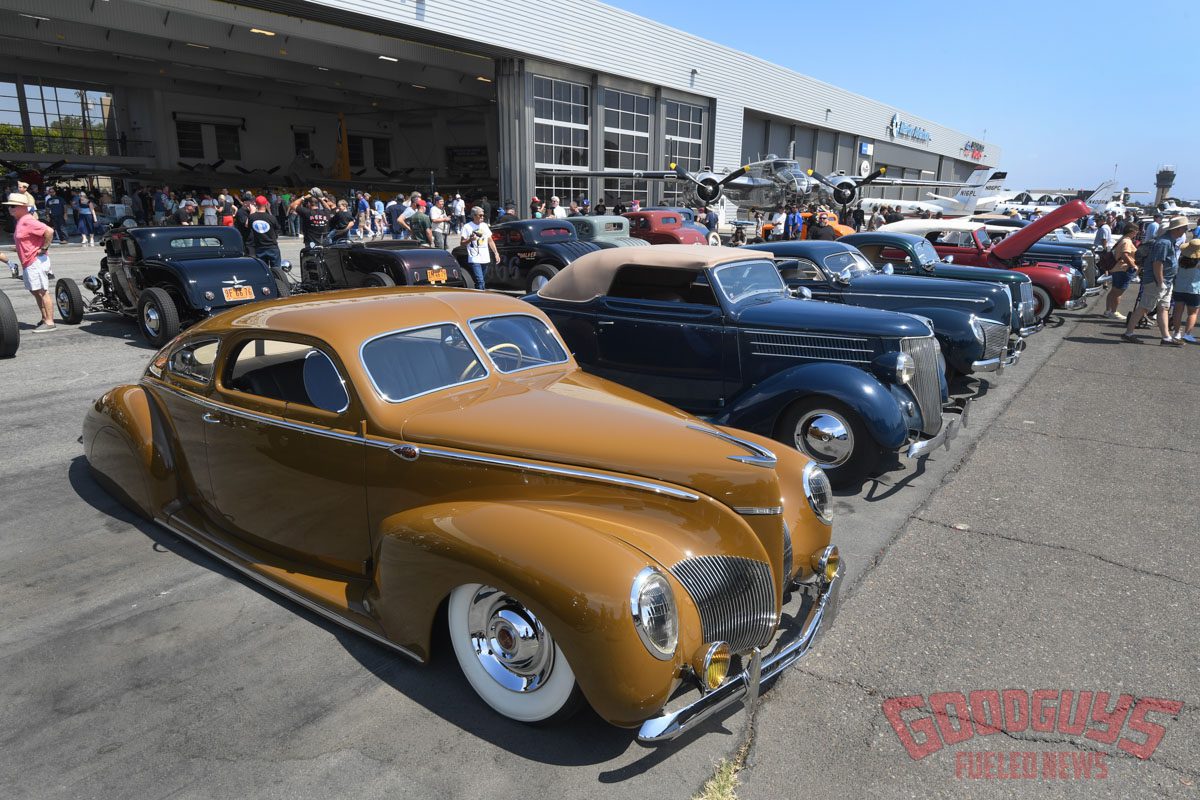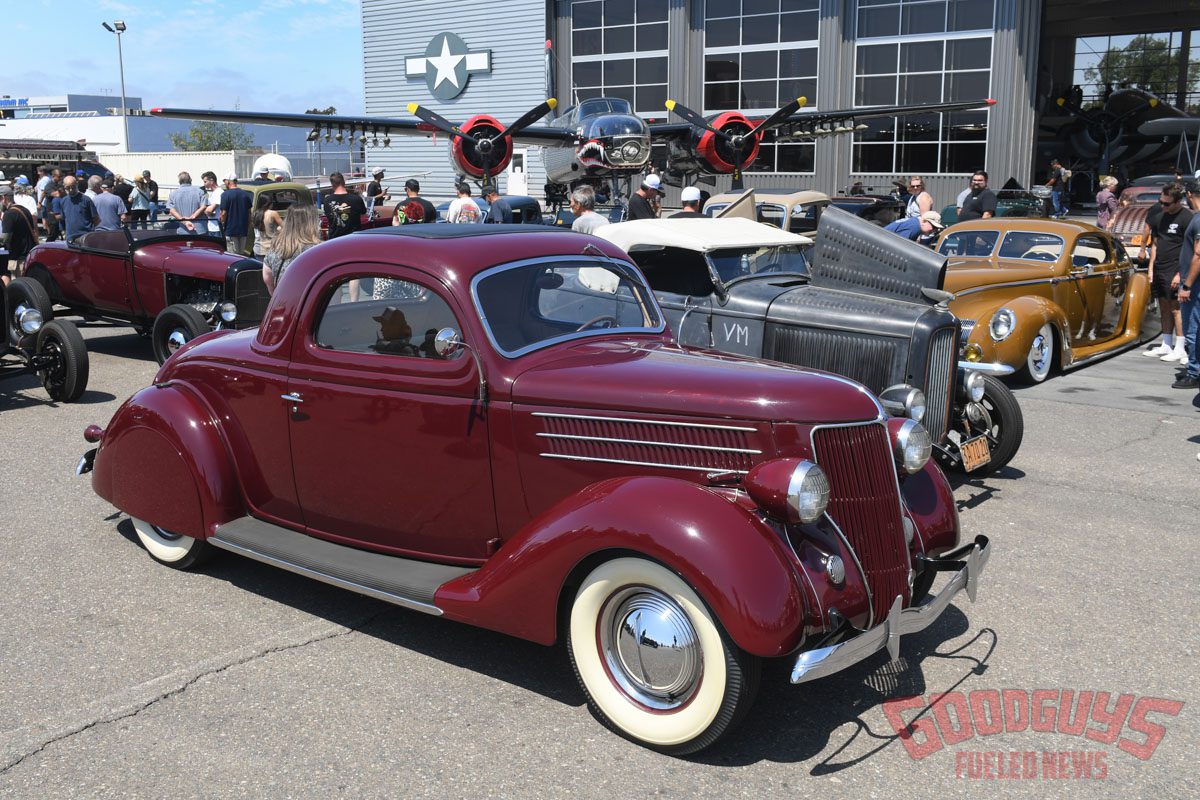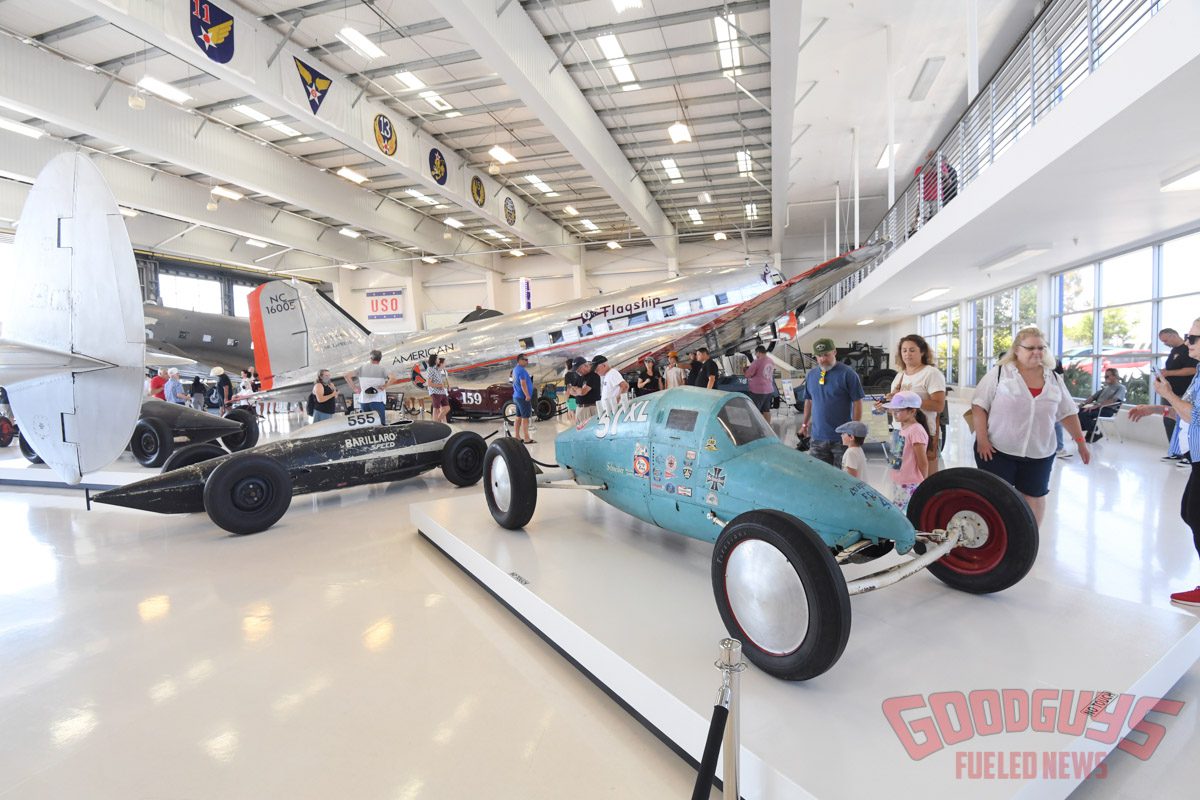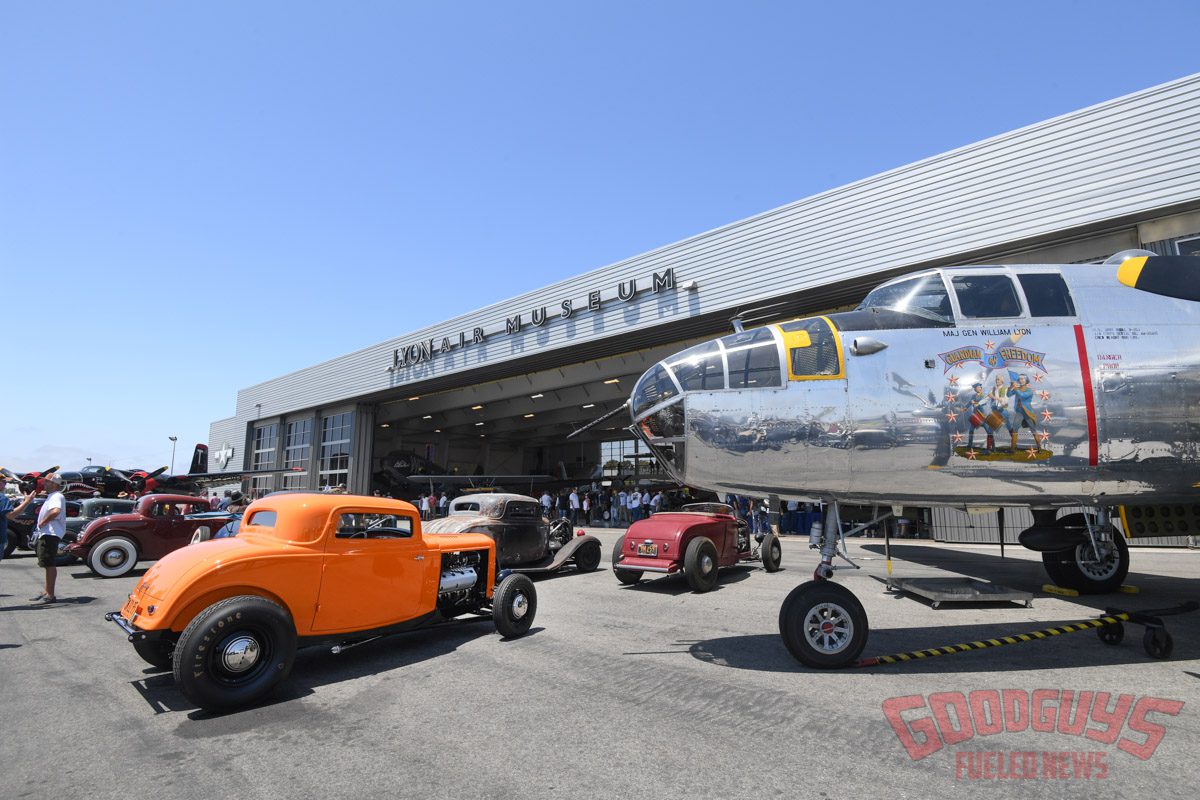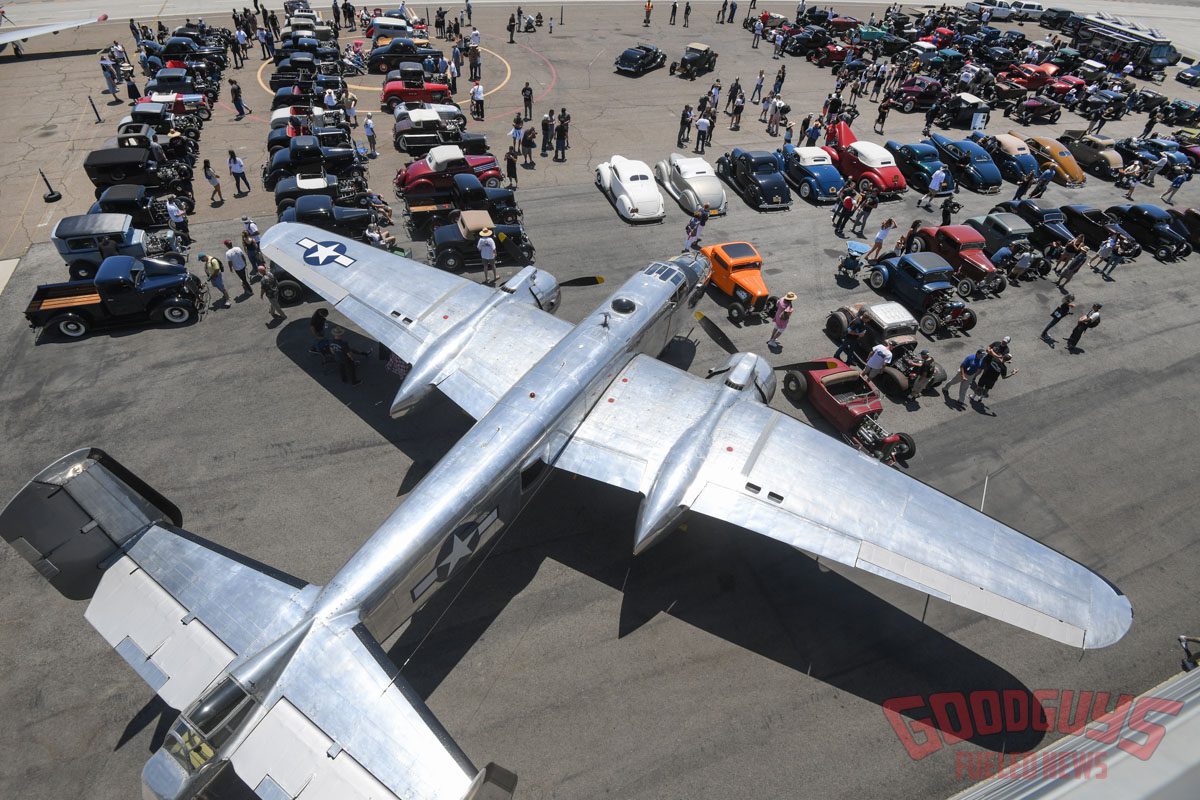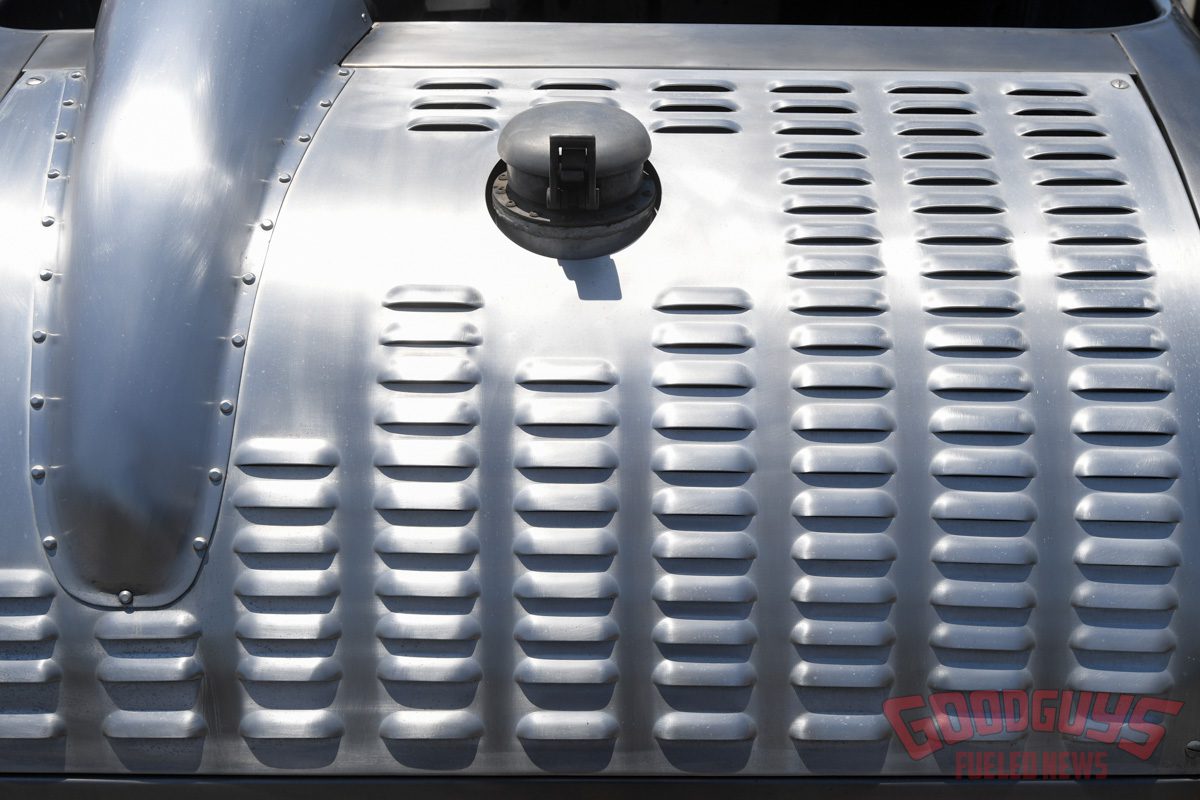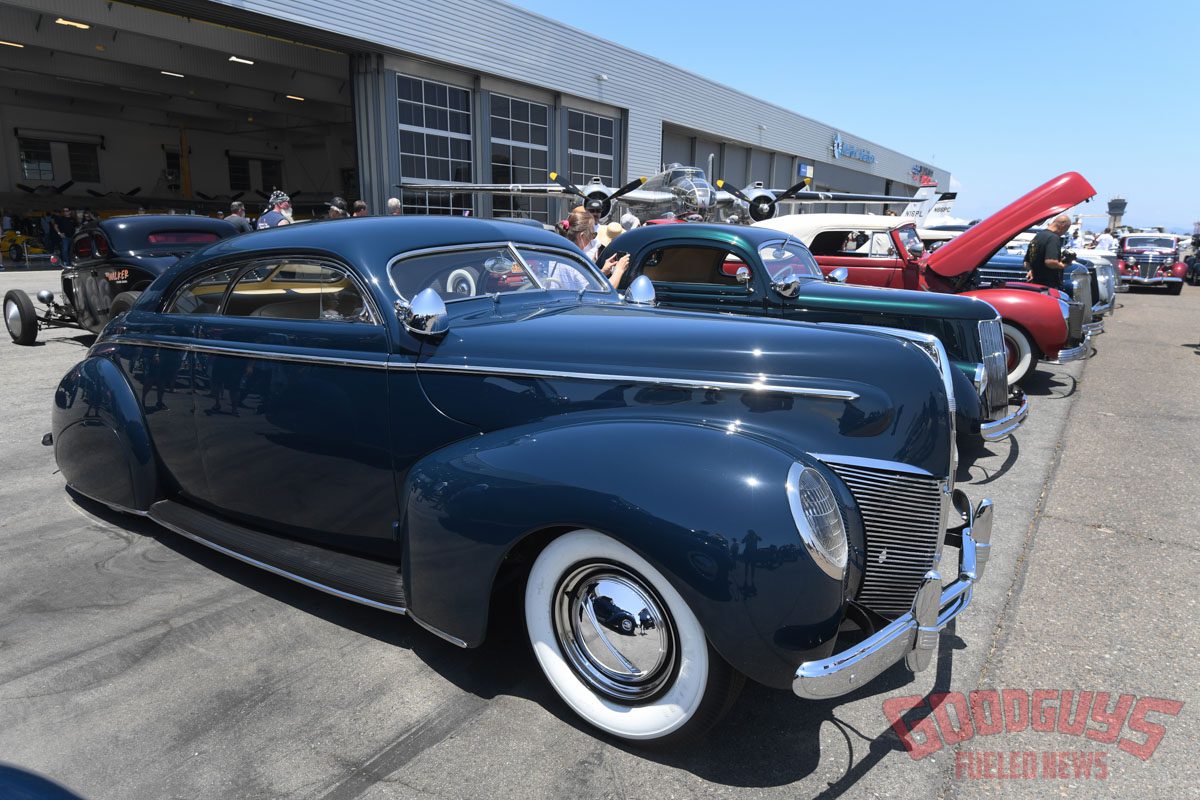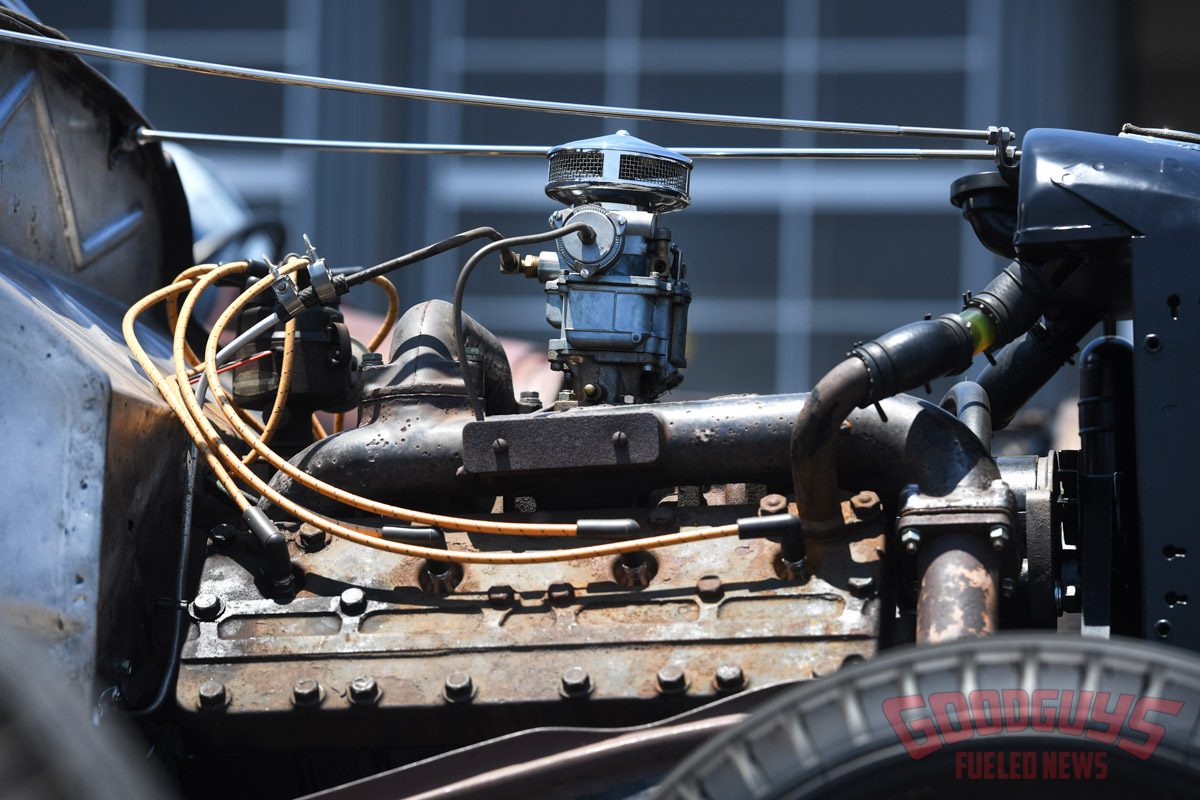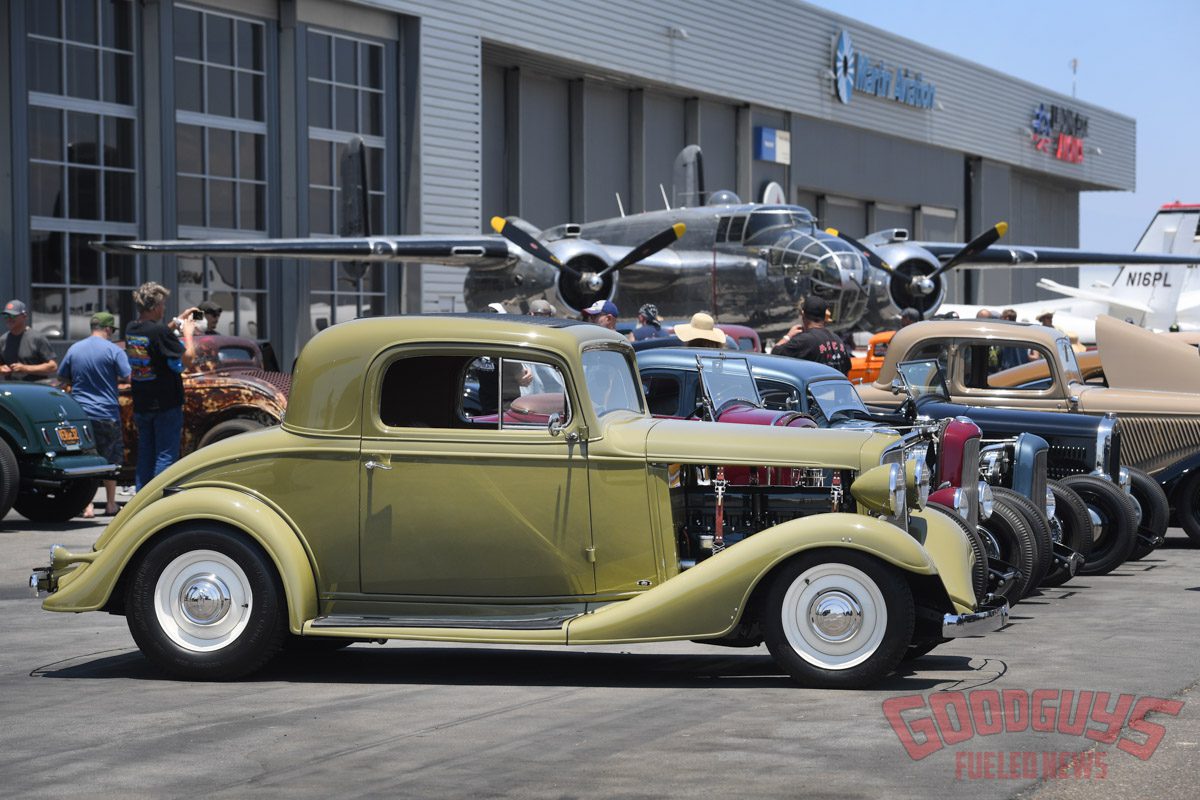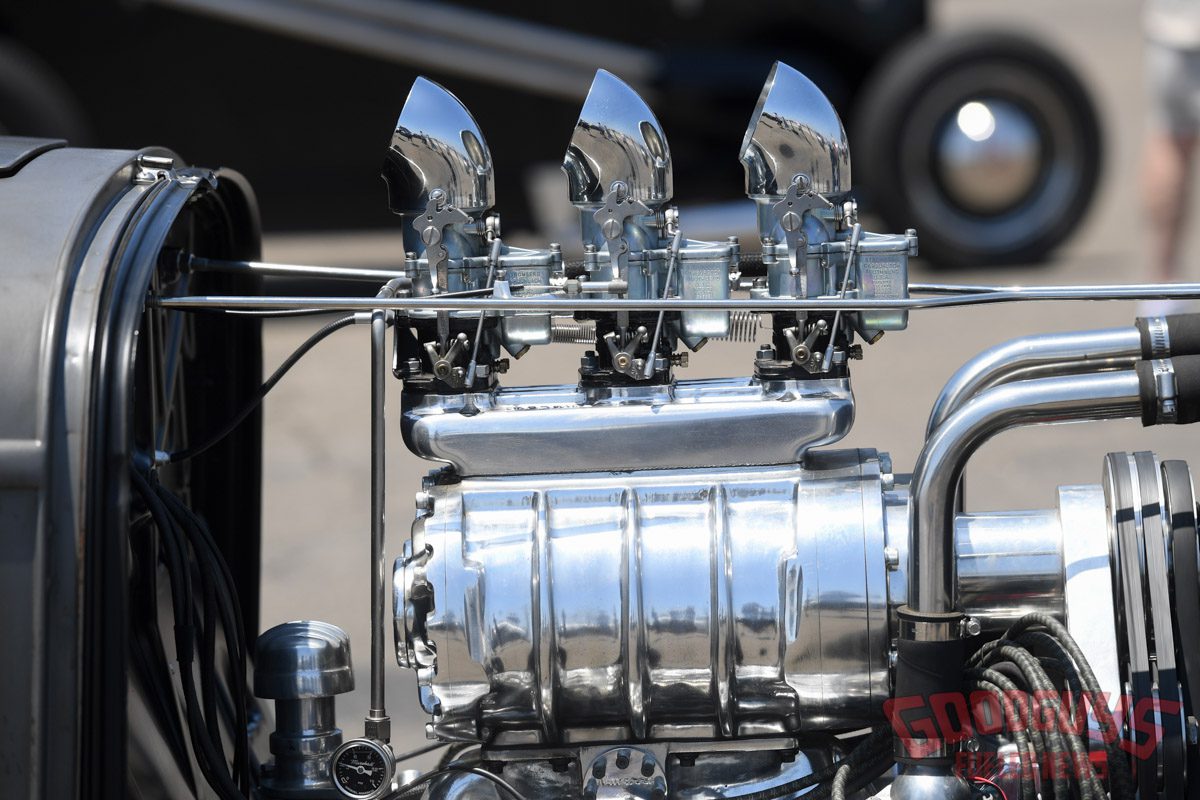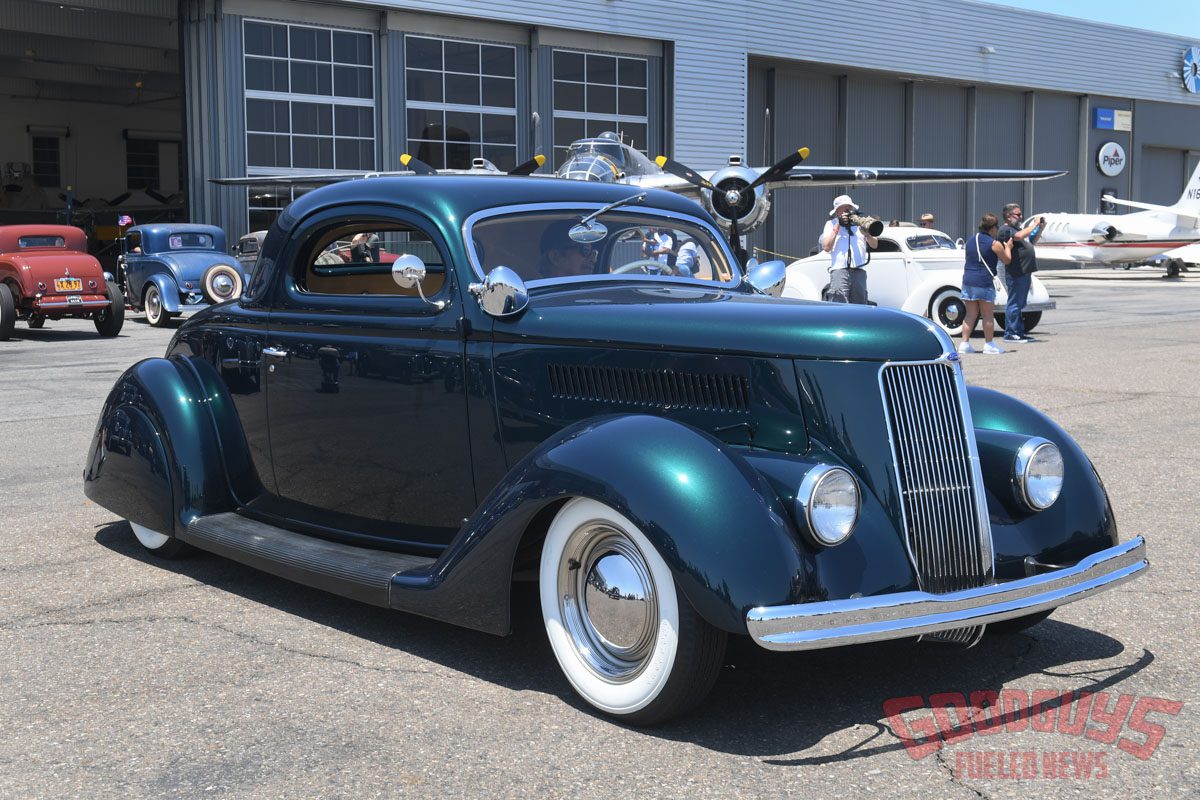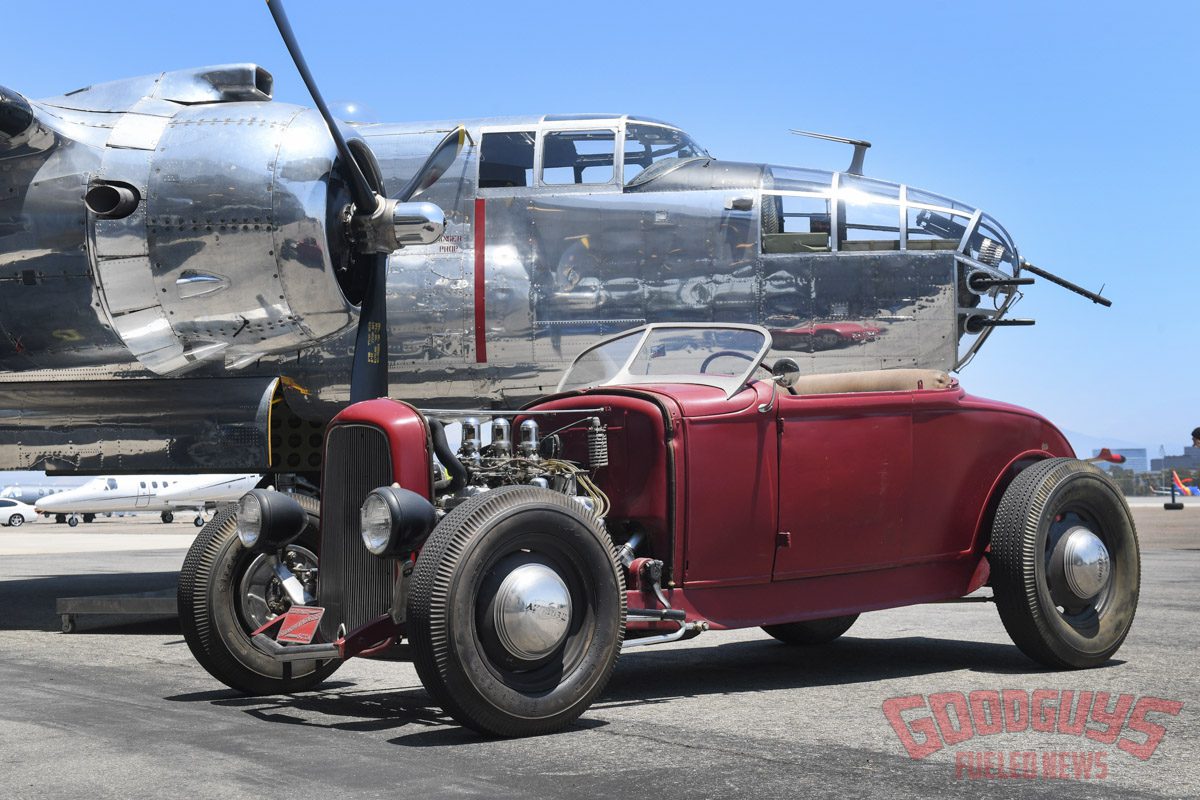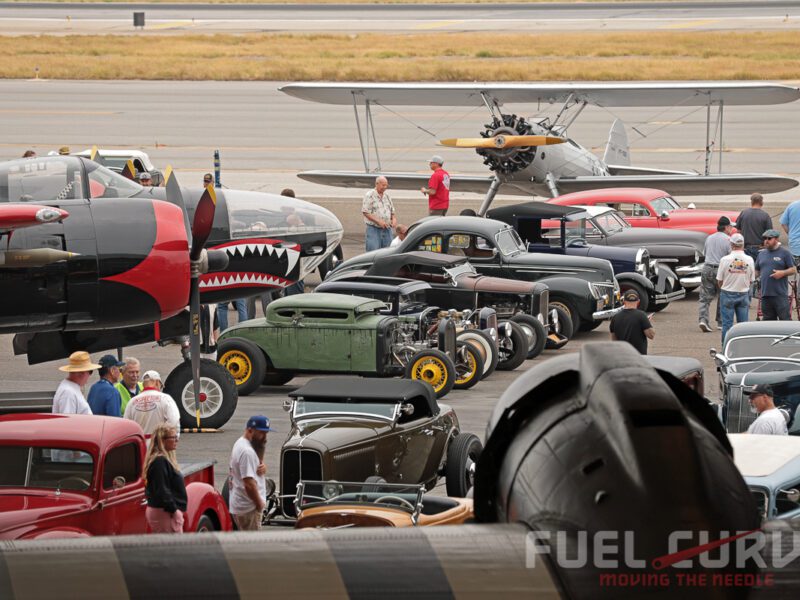Hot Rods on the Tarmac – World War II’s Influence on Hot Rodding
On Saturday, July 16, the Lyon Air Museum in Santa Ana, CA, hosted a special event called Hot Rods on the Tarmac, where more than 100 traditional hot rods and customs were displayed in the shadows of a pair of vintage fighter planes. Interestingly, the hot rods were parked just a few hundred feet from the site of the very first dragstrip. The long-defunct Santa Ana Drags, which opened in 1950, were held on the auxiliary runway on what is now John Wayne Airport.
Hot Rods on the Tarmac was curated by automotive historian and designer Bobby Green and his team. If the name sounds familiar, it’s because Green owns Old Crow Speed Shop and has renovated several historical properties in the Los Angeles area including the Idle Hour, Highland Park Bowl, The Formosa, and most recently Tail o’ the Pup. The one-day event was held in conjunction with the museum’s current exhibit, War Surplus on Wheels, which showcases World War II’s influence on hot rodding. (Vintage airplane seats, lap belts, gauges, levers, fuel tanks and rivets still have a strong presence in the hot rod world today.) The exhibit features one of the largest gatherings of belly tank racecars ever assembled under one roof.
Belly tankers can be traced back to the earliest days of hot rodding. They were created from external fuel tanks that once hung beneath World War II aircraft, such as the P-38 Lightning, the P-51 Mustang, and the P-47 Thunderbolt, among others. After the war ended, these tanks were stockpiled in military surplus yards until a hot rodder with a keen eye and some imagination figured out their aerodynamic shape could be beneficial for land speed racing.
Bill Burke is credited with building the very first belly tank streamliner. He used a 165-gallon WWII external drop tank that he picked up for $7 and mounted it on a modified Ford Model T frame. On July 7, 1946, Eddie Korgan drove Burke’s belly tanker across the dry lakes of Southern California, stopping the clocks at 131.96 mph. And the rest is history.
There are currently 10 belly tankers on display at the Lyon Air Museum, including a re-creation of Burke’s record-setting streamliner. The cars are strategically placed around vintage WWII planes such as the “Honey Bunny” P-38 Lightning fighter plane and the giant B-17 bomber Flying Fortress nicknamed “Fuddy Duddy.”
The museum was founded by Maj. Gen. William Lyon and contains vintage aircraft, rare vehicles, and memorabilia surrounding World War II and highlights the important role the United States played in shaping world history. The War Surplus on Wheels exhibit is open through Sept. 5.
Hot Rods on the Tarmac Photo Extra!
Photos by Marc Gewertz


